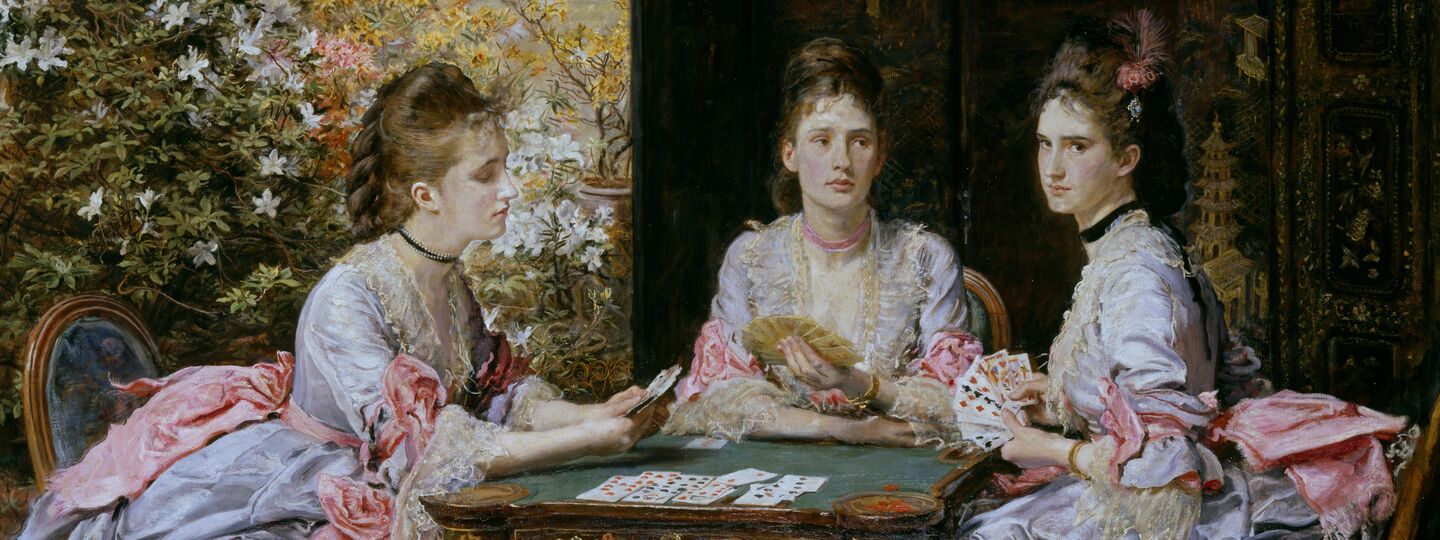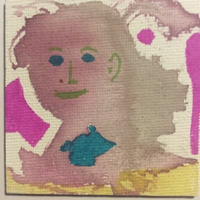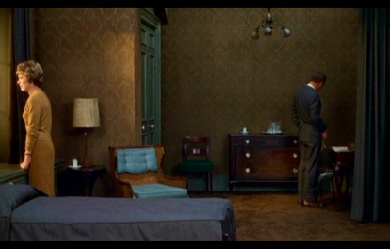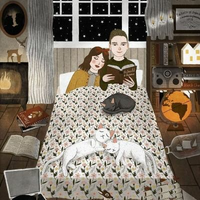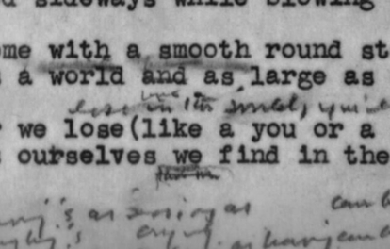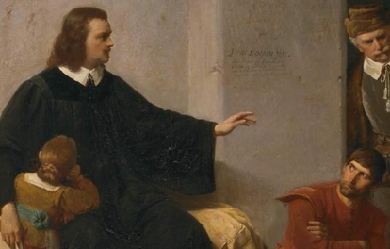
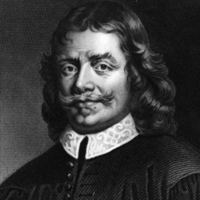
John Bunyan (/ˈbʌnjən/; baptised 30 November 1628– 31 August 1688) was an English writer and Baptist preacher best remembered as the author of the Christian allegory The Pilgrim’s Progress. In addition to The Pilgrim’s Progress, Bunyan wrote nearly sixty titles, many of them expanded sermons. Bunyan came from the village of Elstow, near Bedford. He had some schooling and at the age of sixteen joined the Parliamentary army during the first stage of the English Civil War. After three years in the army he returned to Elstow and took up the trade of tinker, which he had learned from his father. He became interested in religion after his marriage, attending first the parish church and then joining the Bedford Meeting, a nonconformist group in Bedford, and becoming a preacher. After the restoration of the monarch, when the freedom of nonconformists was curtailed, Bunyan was arrested and spent the next twelve years in jail as he refused to undertake to give up preaching. During this time he wrote a spiritual autobiography, Grace Abounding to the Chief of Sinners, and began work on his most famous book, The Pilgrim’s Progress, which was not published until some years after his release. Bunyan’s later years, in spite of another shorter term of imprisonment, were spent in relative comfort as a popular author and preacher, and pastor of the Bedford Meeting. He died aged 59 after falling ill on a journey to London and is buried in Bunhill Fields. The Pilgrim’s Progress became one of the most published books in the English language; 1,300 editions having been printed by 1938, 250 years after the author’s death. He is remembered in the Church of England with a Lesser Festival on 30 August, and on the liturgical calendar of the United States Episcopal Church on 29 August. Some other churches of the Anglican Communion, such as the Anglican Church of Australia, honour him on the day of his death (31 August). Early life John Bunyan was born in 1628 to Thomas and Margaret Bunyan at Bunyan’s End in the parish of Elstow, Bedfordshire. Bunyan’s End is located about half-way between the hamlet of Harrowden (one mile south-east of Bedford) and Elstow High Street. Bunyan’s date of birth is not known, but he was baptised on 30 November 1628, the baptismal entry in the parish register reading "John the sonne of Thomas Bunnion Jun., the 30 November". The name Bunyan was spelt in many different ways (there are 34 variants in Bedfordshire Record Office) and had its origins in the Norman-French name Buignon. There had been Bunyans in north Bedfordshire since at least 1199. Bunyan’s father was a brazier or tinker who travelled around the area mending pots and pans, and his grandfather had been a chapman or small trader. The Bunyans also owned land in Elstow, so Bunyan’s origins were not quite as humble as he suggested in his autobiographical work Grace Abounding to the Chief of Sinners when he wrote that his father’s house was “of that rank that is meanest and most despised in the country”. As a child Bunyan learnt his father’s trade of tinker and was given some rudimentary schooling. In Grace Abounding Bunyan recorded few details of his upbringing, but he did note how he picked up the habit of swearing (from his father), suffered from nightmares, and read the popular stories of the day in cheap chap-books. In the summer of 1644 Bunyan lost both his mother and his sister Margaret. That autumn, shortly before or after his sixteenth birthday, Bunyan enlisted in the Parliamentary army when an edict demanded 225 recruits from the town of Bedford. There are few details available about his military service, which took place during the first stage of the English Civil War. A muster roll for the garrison of Newport Pagnell shows him as private “John Bunnian”. In Grace Abounding, he recounted an incident from this time, as evidence of the grace of God: “When I was a Soldier I, with others were drawn out to go to such a place to besiege it; But when I was just ready to go, one of the company desired to go in my room, to which, when I had consented, he took my place; and coming to the siege, as he stood Sentinel, he was shot into the head with a Musket bullet and died.” Bunyan’s army service provided him with a knowledge of military language which he then used in his book The Holy War, and also exposed him to the ideas of the various religious sects and radical groups he came across in Newport Pagnell. The garrison town also gave him opportunities to indulge in the sort of behaviour he would later confess to in Grace Abounding: “So that until I came to the state of Marriage, I was the very ringleader of all the Youth that kept me company, in all manner of vice and ungodliness”. Bunyan spent nearly three years in the army, leaving in 1647 to return to Elstow and his trade as a tinker. His father had remarried and had more children and Bunyan moved from Bunyan’s End to a cottage in Elstow High Street. Marriage and conversion Within two years of leaving the army, Bunyan married. The name of his wife and the exact date of his marriage are not known, but Bunyan did recall that his wife, a pious young woman, brought with her into the marriage two books that she had inherited from her father: Arthur Dent’s Plain Man’s Pathway to Heaven and Lewis Bayly’s Practice of Piety. He also recalled that, apart from these two books, the newly-weds possessed little: “not having so much household-stuff as a Dish or a Spoon betwixt us both”. The couple’s first daughter, Mary, was born in 1650, and it soon became apparent that she was blind. They would have three more children, Elizabeth, Thomas and John. By his own account, Bunyan had as a youth enjoyed bell-ringing, dancing and playing games including on Sunday, thought by many to be the Sabbath, which was forbidden by the Puritan regime. One Sunday the vicar of Elstow preached a sermon against Sabbath breaking, and Bunyan took this sermon to heart. That afternoon, as he was playing tip-cat (a game in which a small piece of wood is hit with a bat) on Elstow village green, he heard a voice from the heavens “Wilt thou leave thy sins, and go to Heaven? Or have thy sins, and go to Hell?” The next few years were a time of intense spiritual conflict for Bunyan as he struggled with his doubts and fears over religion and guilt over what he saw as his state of sin. During this time Bunyan, whilst on his travels as a tinker, happened to be in Bedford and pass a group of women who were talking about spiritual matters on their doorstep. The women were in fact some of the founding members of the Bedford Free Church or Meeting and Bunyan, who had been attending the parish church of Elstow, was so impressed by their talk that he joined their church. At that time the nonconformist group was meeting in St John’s church in Bedford under the leadership of former Royalist army officer John Gifford. At the instigation of other members of the congregation Bunyan began to preach, both in the church and to groups of people in the surrounding countryside. In 1656, having by this time moved his family to St Cuthbert’s Street in Bedford, he published his first book, Gospel Truths Opened, which was inspired by a dispute with Quakers. In 1658 Bunyan’s wife died, leaving him with four small children, one of them blind. A year later he married an eighteen-year-old woman called Elizabeth. Imprisonment The religious tolerance which had allowed Bunyan the freedom to preach became curtailed with the restoration of the monarchy in 1660. The members of the Bedford Meeting were no longer able to meet in St John’s church, which they had been sharing with the Anglican congregation. That November, Bunyan was preaching at Lower Samsell, a farm near the village of Westoning, thirteen miles from Bedford, when he was warned that a warrant was out for his arrest. Deciding not to make an escape, he was arrested and brought before the local magistrate Sir Francis Wingate, at Harlington House. The Act of Uniformity, which made it compulsory for preachers to be ordained by an Anglican bishop and for the revised Book of Common Prayer to be used in church services, was still two years away, and the Act of Conventicles, which made it illegal to hold religious meetings of five or more people outside the Church of England was not passed until 1664. Bunyan was arrested under the Conventicle Act of 1593, which made it an offence to attend a religious gathering other than at the parish church with more than five people outside their family. The offence was punishable by 3 months imprisonment followed by banishment or execution if the person then failed to promise not to re-offend. The Act had been little used, and Bunyan’s arrest was probably due in part to concerns that non-conformist religious meetings were being held as a cover for people plotting against the king (although this was not the case with Bunyan’s meetings). The trial of Bunyan took place in January 1661 at the quarter sessions in Bedford, before a group of magistrates under John Kelynge, who would later help to draw up the Act of Uniformity. Bunyan, who had been held in prison since his arrest, was indicted of having “devilishly and perniciousy abstained from coming to church to hear divine service” and having held “several unlawful meetings and conventicles, to the great disturbance and distraction of the good subjects of this kingdom”. He was sentenced to three months imprisonment with transportation to follow if at the end of this time he didn’t agree to attend the parish church and desist from preaching. As Bunyan refused to agree to give up preaching, his period of imprisonment eventually extended to 12 years and brought great hardship to his family. Elizabeth, who made strenuous attempts to obtain his release, had been pregnant when her husband was arrested and she subsequently gave birth prematurely to a still-born child. Left to bring up four step-children, one of whom was blind, she had to rely on the charity of Bunyan’s fellow members of the Bedford Meeting and other supporters and on what little her husband could earn in gaol by making shoelaces. But Bunyan remained resolute: “O I saw in this condition I was a man who was pulling down his house upon the head of his Wife and Children; yet thought I, I must do it, I must do it”. Bunyan spent his 12 years’ imprisonment in Bedford County Gaol, which stood on the corner of the High Street and Silver Street. There were however occasions when he was allowed out of prison, depending on the gaolers and the mood of the authorities at the time, and he was able to attend the Bedford Meeting and even preach. His daughter Sarah was born during his imprisonment (the other child of his second marriage, Joseph, was born after his release in 1672). In prison, Bunyan had a copy of the Bible and of John Foxe’s Book of Martyrs, as well as writing materials. He also had at times the company of other preachers who had been imprisoned. It was in Bedford Gaol that he wrote Grace Abounding and started work on The Pilgrim’s Progress, as well as penning several tracts that may have brought him a little money. In 1671, while still in prison, he was chosen as pastor of the Bedford Meeting. By that time there was a mood of increasing religious toleration in the country and in March 1672 the king issued a declaration of indulgence which suspended penal laws against nonconformists. Thousands of nonconformists were released from prison, amongst them Bunyan and five of his fellow inmates of Bedford Gaol. Bunyan was freed in May 1672 and immediately obtained a licence to preach under the declaration of indulgence. Later life Following his release from gaol in 1672 Bunyan probably did not return to his former occupation of tinker. Instead he devoted his time to writing and preaching. He continued as pastor of the Bedford Meeting and travelled over Bedfordshire and adjoining counties on horseback to preach, becoming known affectionately as “Bishop Bunyan”. His preaching also took him to London, where Lord Mayor Sir John Shorter became a friend and presented him with a silver-mounted walking stick. The Pilgrim’s Progress was published in 1678 by Nathaniel Ponder and immediately became popular, though probably making more money for its publisher than for its author. Two events marred Bunyan’s life during the later 1670s. Firstly he became embroiled in a scandal concerning a young woman called Agnes Beaumont. When going to preach in Gamlingay in 1674 he allowed Beaumont, a member of the Bedford Meeting, to ride pillion on his horse, much to the anger of her father, who then died suddenly. His daughter was initially suspected of poisoning him, though the coroner found he had died of natural causes. And then in 1676-7 he underwent a second term of imprisonment, probably for refusing to attend the parish church. In 1688, on his way to London, Bunyan made a detour to Reading, Berkshire, to try and resolve a quarrel between a father and son. Continuing to London to the house of his friend, grocer John Strudwick of Snow Hill in the City of London, he was caught in a storm and fell ill with a fever. He died in Strudwick’s house on the morning of 31 August 1688 and was buried in the tomb belonging to Strudwick in Bunhill Fields nonconformist burial ground in London. Bunyan’s estate at his death was worth £42 19s 0d. His widow Elizabeth died in 1691. Works * Between 1656 when he published his first work, Some Gospel Truths Opened (a tract against the Quakers), and his death in 1688, Bunyan published 42 titles. A further two works, including his Last Sermon, were published the following year by George Larkin. In 1692 Southwark comb-maker Charles Doe, who was a friend of Bunyan’s later years, brought out, with the collaboration of Bunyan’s widow, a collection of the author’s works, including 12 previously unpublished titles, mostly sermons. Six years later Doe published The Heavenly Footman and finally in 1765 Relation of My Imprisonment was published, giving a total of 58 published titles. * It is the allegory The Pilgrim’s Progress, written during Bunyan’s twelve-year imprisonment although not published until 1678 six years after his release, that made Bunyan’s name as an author with its immediate success. It remains the book for which Bunyan is best remembered. The images Bunyan uses in The Pilgrim’s Progress are reflections of images from his own world; the strait gate is a version of the wicket gate at Elstow Abbey church, the Slough of Despond is a reflection of Squitch Fen, a wet and mossy area near his cottage in Harrowden, the Delectable Mountains are an image of the Chiltern Hills surrounding Bedfordshire. Even his characters, like the Evangelist as influenced by John Gifford, are reflections of real people. Further allegorical works were to follow: The Life and Death of Mr. Badman (1680), Pilgrim’s Progress Part II, and The Holy War (1682). Grace Abounding to the Chief of Sinners, a spiritual autobiography was published in 1666, when he was still in jail. Adaptations * In March, 2015 Director Darren Wilson announced a Kickstarter campaign to produce a full-length feature film based on The Pilgrims Progress called Heaven Quest: A Pilgrim’s Progress Movie. Memorials * In 1862 a recumbent statue was created to adorn Bunyan’s grave, and restored in 1922. * In 1874, a bronze statue of John Bunyan, sculpted by Sir Joseph Edgar Boehm, was erected in Bedford. This stands at the south-western corner of St Peter’s Green, facing down Bedford’s High Street. The site was chosen by Boehm for its significance as a crossroads. Bunyan is depicted expounding the Bible, to an invisible congregation, with a broken fetter representing his imprisonment by his left foot. There are three scenes from “The Pilgrim’s Progress” on the stone plinth: Christian at the wicket gate; his fight with Apollyon; and losing his burden at the foot of the cross of Jesus. The statue was unveiled by Lady Augusta Stanley, wife of the Dean of Westminster, on Wednesday 10 June 1874. In 1876 the Duke of Bedford gave bronze doors by Frederick Thrupp depicting scenes from The Pilgrim’s Progress to the Bunyan Meeting (the former Bedford Meeting which had been renamed in Bunyan’s honour). * There is another statue of him in Kingsway, London, and there are memorial windows in Westminster Abbey, Southwark Cathedral and various churches, including Elstow Abbey (the parish church of Elstow) and the Bunyan Meeting Free Church in Bedford. * Bunyan is remembered in the Church of England with a Lesser Festival on 30 August, and on the liturgical calendar of the United States Episcopal Church on 29 August. Some other churches of the Anglican Communion, such as the Anglican Church of Australia, honour him on the day of his death (31 August). Legacy * Bunyan is best remembered for The Pilgrim’s Progress, a book which gained immediate popularity. By 1692, four year’s after the author’s death, publisher Charles Doe estimated that 100,000 copies had been printed in England, as well as editions “in France, Holland, New England and Welch”. By 1938, 250 years after Bunyan’s death, more than 1,300 editions of the book had been printed. * During the 18th century Bunyan’s unpolished style fell out of favour, but his popularity returned with Romanticism, poet Robert Southey writing an appreciative biography in 1830. Bunyan’s reputation was further enhanced by the evangelical revival and he became a favourite author of the Victorians. The tercentenary of Bunyan’s birth, celebrated in 1928, elicited praise from his former adversary, the Church of England. Although popular interest in Bunyan waned during the second half of the twentieth century, academic interest in the writer has increased and Oxford University Press brought out a new edition of his works, beginning in 1976. Authors who have been influenced by Bunyan include Nathaniel Hawthorne, Herman Melville, Charles Dickens, Louisa May Alcott and George Bernard Shaw. * Bunyan’s work, in particular The Pilgrim’s Progress, has reached a wider audience through stage productions, film, TV, and radio. An opera by Ralph Vaughan Williams based on The Pilgrim’s Progress was first performed at the Royal Opera House in 1951 as part of the Festival of Britain and revived in 2012 by the English National Opera. * John Bunyan had six children, five of whom are known to have married, of which four had children. Moot Hall Museum (in Elstow) has a record of John’s descendants, down to the nineteenth century but as of September 2013, no verifiable trace of later descendants has been found. Selected bibliography * * Among Bunyan’s many works: References Wikipedia—https://en.wikipedia.org/wiki/John_Bunyan
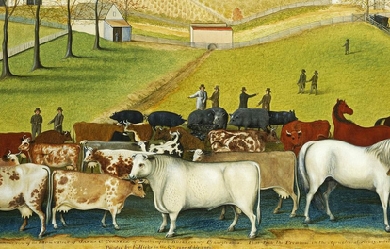
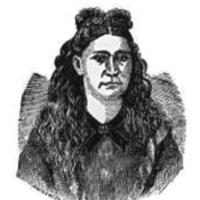
Julia Ann Moore, the “Sweet Singer of Michigan”, born Julia Ann Davis in Plainfield Township, Kent County, Michigan (December 1, 1847–June 5, 1920), was an American poet, or more precisely, poetaster. Like Scotland’s William McGonagall, she is famed chiefly for writing notoriously bad poetry. Biography Young Julia grew up on her family’s Michigan farm, the eldest of four children. When she was ten, her mother became ill, and Julia assumed many of her mother’s responsibilities. Her formal education was thereby limited. In her mid-teens, she started writing poetry and songs, mostly in response to the death of children she knew, but any newspaper account of disaster could inspire her. At age 17, she married Frederick Franklin Moore, a farmer. Julia ran a small store and, over the years, bore ten children, of whom six survived to adulthood. She continued to write poetry and songs. Moore’s first book of verse, The Sentimental Song Book was published in 1876 by C. M. Loomis of Grand Rapids, and quickly went into a second printing. A copy ended up in the hands of James F. Ryder, a Cleveland publisher, who republished it under the title The Sweet Singer of Michigan Salutes the Public. Ryder sent out numerous review copies to newspapers across the country, with a cover letter filled with low key mock praise. And so Moore received national attention. Following Ryder’s lead, contemporary reviews were amusedly negative. The Rochester Democrat wrote of Sweet Singer, that Shakespeare, could he read it, would be glad that he was dead …. If Julia A. Moore would kindly deign to shed some of her poetry on our humble grave, we should be but too glad to go out and shoot ourselves tomorrow. The Hartford Daily Times said that to meet such steady and unremitting demands on the lachrymal ducts one must be provided, as Sam Weller suspected Job Trotter was, ‘with a main, as is allus let on.’… The collection became a curious best-seller, though it is unclear whether this was due to public amusement with Moore’s poetry or genuine appreciation of the admittedly “sentimental” character of her poems. It was, more or less, the last gasp of that school of obituary poetry that had been broadly popular in the U. S. throughout the mid-19th century. Moore gave a reading and singing performance, with orchestral accompaniment, in 1877 at a Grand Rapids opera house. She managed to interpret jeering as criticism of the orchestra. Moore’s second collection, A Few Choice Words to the Public appeared in 1878, but found few buyers. Moore gave a second public performance in late 1878 at the same opera house. By then she had figured out that the praise directed to her was false and the jeering sincere. She began by admitting her poetry was “partly full of mistakes” and that “literary is a work very hard to do”. After the poetry and the laughter and jeering in response was over, Moore ended the show by telling the audience: You have come here and paid twenty-five cents to see a fool; I receive seventy-five dollars, and see a whole houseful of fools. Afterwards, her husband forbade her to publish any more poetry. Three more poems were eventually published, and she would write poems for friends. In 1880, she also published, in newspaper serialization, a short story “Lost and Found”, a strongly moralistic story about a drunkard, and a novella “Sunshine and Shadow”, a peculiar romance set in the American Revolution. The ending of “Sunshine and Shadow” was perhaps intended to be self-referential: the farmer facing foreclosure is gratefully rescued by his wife’s publishing her secret cache of fiction. According to some reports, though, her husband was not grateful, but embarrassed. Shamed or not, he moved the family 100 miles north to Manton in 1882. Moore’s notoriety was known in Manton, but the locals respected her, and did not cooperate with the occasional reporter trying to revisit the past. They were a successful business couple, he with an orchard and sawmill, she with a store. Her husband died in 1914. The next year, Julia republished “Sunshine and Shadow” in pamphlet form. She spent much of her widowhood “melancholy”, sitting on her porch. She died quietly in 1920. The news of her death was widely reported, sometimes with a light touch. On her poetry Some comparison to William McGonagall is worth making. Unlike McGonagall, Moore commanded a fairly wide variety of meters and forms, albeit like Emily Dickinson the majority of her verse is in the ballad meter. Like McGonagall, she held a maidenly bluestocking’s allegiance to the Temperance movement, and frequently indited odes to the joys of sobriety. Most importantly, like McGonagall, she was drawn to themes of accident, disaster, and sudden death; as has been said of A. E. Housman’s A Shropshire Lad, in her pages you can count the dead and wounded. Edgar Wilson Nye called her “worse than a Gatling gun”. Here, she is inspired by the Great Chicago Fire: The great Chicago Fire, friends, Will never be forgot; In the history of Chicago It will remain a darken spot. It was a dreadful horrid sight To see that City in flames; But no human aid could save it, For all skill was tried in vain. Her less morbid side is on display when she hymns Temperance Reform Clubs: Many a man joined the club That never drank a drachm, Those noble men were kind and brave They care not for the slang— The slang they meet on every side: “You’re a reform drunkard, too; You’ve joined the red ribbon brigade, Among the drunkard crew.” Despite her acknowledgment that “Literary is a work very difficult to do,” she did not approve of the life of Byron: The character of “Lord Byron” Was of a low degree, Caused by his reckless conduct, And bad company. He sprung from an ancient house, Noble, but poor, indeed. His career on earth, was marred By his own misdeeds. Influence Mark Twain was a self-described fan of Moore (though not for the reasons Moore would have liked). Twain alluded to her work in Following the Equator, and it is widely assumed that Moore served as a literary model for the character of Emmeline Grangerford in Adventures of Huckleberry Finn. Grangerford’s funereal ode to Stephen Dowling Botts: O no. Then list with tearful eye, Whilst I his fate do tell. His soul did from this cold world fly By falling down a well. They got him out and emptied him; Alas it was too late; His spirit was gone for to sport aloft In the realms of the good and great. (Twain) is not far removed from Moore’s poems on subjects like Little Libbie: One more little spirit to Heaven has flown, To dwell in that mansion above, Where dear little angels, together roam, In God’s everlasting love. (Moore) Moore was also the inspiration for comic poet Ogden Nash, as he acknowledged in his first book, and whose daughter reported that her work convinced Nash to become a “great bad poet” instead of a “bad good poet”. The Oxford Companion to American Literature describes Nash as using Moore’s hyperdithyrambic meters, pseudo-poetic inversions, gangling asymmetrical lines, extremely pat or elaborately inexact rimes, parenthetical dissertations, and unexpected puns. Selections of Moore appeared in D. B. Wyndham-Lewis and Charles Lee’s famous Stuffed Owl anthology, and in other collections of bad poetry. Most of her poetry was reprinted in a 1928 edition, which can be found online. Her complete poetry and prose, with biography, notes, and references, can be found in the Riedlinger edited collection Mortal Refrains. Most poetry collections reprint the latest, “best”, versions of their contents. Riedlinger has adopted the opposite philosophy. Moore has been grouped into the Western Michigan School of Bad Versemakers. Her local contemporaries—including Dr. William Fuller, S.H. Ewell, J.B. Smiley, and Fred Yapple—do not appear to have had relationships with each other, but their proximity and similar penchant for exceptionally laughable verse have led to their posthumous grouping together.
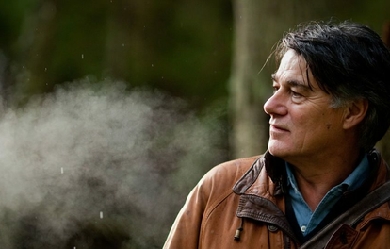

David Whyte (born 2 November 1955) is an English poet. He is quoted as saying that all of his poetry and philosophy is based on "the conversational nature of reality". Life and Work Whyte's mother was from Waterford, Ireland, and his father was a Yorkshireman. He attributes his poetic interest to both the songs and poetry of his mother's Irish heritage and to the landscape of West Yorkshire. He grew up in West Yorkshire and has commented that he had "a Wordsworthian childhood", in the fields, woods and on the moors. Whyte has a degree in Marine zoology from Bangor University. During his twenties Whyte worked as a naturalist and lived in the Galapagos Islands, where he experienced a near drowning on the southern shore of Hood Island. He led anthropological and natural history expeditions in the Andes the Amazon and the Himalayas. Whyte moved to the US in 1981 and began a career as a poet and speaker in 1986. From 1987 he began taking his poetry and philosophy to larger audiences including consulting and lecturing on organisational leadership models in the US and UK exploring the role of creativity in business. He has worked with companies such as Boeing, AT&T, NASA, Toyota, The Royal Air Force and the Arthur Andersen accountancy group. Work and vocation and "Conversational Leadership" is the subject of several of Whyte's prose books, including Crossing the Unknown Sea: Work as Pilgrimage of Identity, The Three Marriages: Reimagining Work, Self and Relationship and The Heart Aroused: Poetry and the Preservation of The Soul in Corporate America (top of business best seller list). Whyte has written seven volumes of poetry and four books of prose. Pilgrim is based on the human need to travel, "From here to there". The House of Belonging looks at the same human need for home. He describes his collection Everything Is Waiting For You (2003) as arising from the grief at the loss of his mother. His latest book is Consolations: The Solace, Nourishment and Underlying Meaning of Everyday Words, an attempt to "rehabilitate" many everyday words we often use only in pejorative or unimaginative ways. He has also written for newspapers including The Huffington Post and The Observer. He leads group poetry and walking journeys regularly in Ireland, England and Italy. He has an honorary degree from Neumann College, Pennsylvania, and is Associate Fellow of both Templeton College, Oxford, and the Saïd Business School, Oxford. Whyte runs the Many Rivers organisation and Invitas: The Institute for conversational leadership, which he founded in 2014. He has lived in Seattle and on Whidbey Island and currently lives in Langley, in the US Pacific North West and holds dual US-British citizenship. He has one daughter, Charlotte, from his second marriage to Dr. Leslie Cotter, from whom he divorced in November 2014, and a son, Brendan from his first marriage to Autumn Preble. Whyte has practised Zen and was a regular rock climber. He was a close friend of the Irish poet John O'Donohue. Poetry Collections * Pilgrim (2012) * River Flow: New & Selected Poems Revised Edition (Many Rivers Press 2012) * River Flow: New & Selected Poems 1984–2007 (Many Rivers Press 2007) * Everything is Waiting for You (Many Rivers Press 2003) * The House of Belonging (Many Rivers Press 1996) * Fire in the Earth (Many Rivers Press 1992) * Where Many Rivers Meet (Many Rivers Press 1990) * Songs for Coming Home (Many Rivers Press 1984) Prose * The Three Marriages: Reimagining Work, Self & Relationship (Riverhead 2009) * Crossing the Unknown Sea: Work as A Pilgrimage of Identity (Riverhead 2001) * The Heart Aroused: Poetry & the Preservation of the Soul in Corporate America (Doubleday/Currency 1994) * Consolations: The Solace Nourishment and Underlying Meaning of Everyday Words" (Many Rivers Press 2015) References Wikipedia—http://en.wikipedia.org/wiki/David_Whyte_(poet)
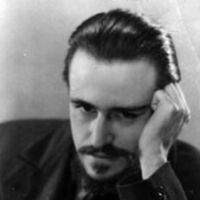
Francisco Pino (Valladolid, 18 de enero de 1910 - íd., 2002), poeta español. Perteneciente a una importante familia burguesa, nunca se interesó por los intereses económicos familiares y, por el contrario, apoyado por su madre, mujer muy culta y buena lectora, se inclinó por el camino intelectual. Tras pasar por el Colegio de Lourdes de Valladolid, comenzó en 1927 la carrera de Derecho en la Universidad de Valladolid. en 1927 conoce a Jorge Guillén, cuyo Cántico le influirá en su primera poesía junto la vanguardia creacionista. Al año siguiente funda en Valladolid, junto a José María Luelmo, Arroyo y Juan R. Ribó, la revista poética Meseta. Viaja a Francia en 1930 y allí cursa estudios de Filología Francesa y se involucra en el movimiento surrealista, después funda DDOOSS (1931), año en que se licencia en Derecho. En 1933 marchó a estudiar inglés y Ciencias Económicas en la Universidad de Londres; en Inglaterra revive su interés por el Catolicismo y funda la revista A la nueva ventura (1934); regresa a España en 1935 para matricularse en la Universidad Central de Madrid. Al finalizar la Guerra Civil, durante la cual sufrió traumáticas experiencias, vivió una especie de activo exilio interior en su casa modernista en el Pinar de Antequera (Valladolid), en compañía de su esposa, entregado a elaborar su obra poética, fiel a la Vanguardia histórica y poco publicitada, de la que dan fe unos setenta títulos que contienen su poesía experimental, visual y religiosa. De esta actividad da fe que fundó y dirigió no menos de nueve revistas de poesía: Meseta (1928), Ddooss (1931), A la nueva ventura (1934), Cancionero (1941), Mejana (1965), Carpetas amarillas (1971), Carpetas blancas (1975), Carpetas grises (1976), Carpetas verdes (1978). En 1989 recibió el Premio de las Letras de Castilla y León y la Medalla de Oro del Círculo de Bellas de Madrid. La Academia Castellano Leonesa de Poesía le entregó en el año 2000 un premio por el conjunto de su obra y en abril de 2002, pocos meses antes de su muerte, publicó su último libro Claro decir, Canto a la vejez. En los tres volúmenes de Distinto y junto. Poesía completa (1990), cuyo título alude a un verso de Fray Luis, se halla la edición de su poesía hasta 1990, en documentada edición a cargo de Antonio Piedra. En 1989 recibió el Premio Castilla y León de las Letras; en 1993 el Premio Provincia de Valladolid por su trayectoria literaria; en 1999 fue homenajeado en las Primeras Jornadas de Poesía Iberoamericana y al año siguiente fue nombrado Hijo Predilecto de Valladolid, la Academia Castellano Leonesa de Poesía le entregó un premio por el conjunto de su obra y obtuvo el Premio El Norte de Castilla por su trayectoria literaria. Escritura La poesía de Pino se mantuvo fiel a las Vanguardias: poesía gráfica que incluye poemas fotográficos y tipográficos, cartelas y mosaicos. Francisco Pino inició su vida literaria como fundador y colaborador de las revistas Meseta (1928-29), DDOOSS (1931) y A la nueva ventura (1934), donde realizó una intensa labor surrealista. Jorge Guillén, Federico García Lorca y Rafael Alberti fueron algunos de los colaboradores de estas revistas. Durante la guerra civil comienza una serie de poemas amorosos que publica en 1942 bajo el título de Espesa rama. En 1957 publica Vuela pluma, bajo la influencia juanramoniana, en 1966 reúne su poesía religiosa en Cinco preludios. En 1969 aparece el último libro de esta etapa, Textos económicos. Continúa en 1970 con uno de los libros claves de la poesía experimental española, Solar, al que le siguen Poema (1972), Hombre, Canción (1973), Octaedro mortal o reloj de arena (1973), formando lo que el autor denomina Agujeros para la poesía. El crítico Antonio Piedra reunió en 1994 su obra vanguardista en la colección Siyno sino. El poeta y profesor de literatura Mario Hernández define a Francisco Pino como «poeta que ha asumido con voluntaria decisión las contradicciones históricas que marcan a los miembros de la llamada generación del 36, haciéndose él mismo depositario conflictivo de unas herencias y de su repudio o superación por una vía irónica o experimental». Obras Lírica * Espesa rama, M., Gráficas Sánchez, 1942. * XXXV canciones del sol, Valladolid, Gesper, 1952. * Versos religiosos, Valladolid, Sever-Cuesta, 1954. * El caballero y la peonía, Valladolid, Miñón, 1955. * El pájaro y los muros, Valladolid, Miñón, 1955. * Vida de San Pedro Regalado, sueño, Valladolid, Meseta, 1956. * Vuela pluma, Valladolid, Sever-Cuesta, 1957. * Las raíces y el aire, Valladolid, Sever-Cuesta, 1958. * Pet, poema, Valladolid, Sever-Cuesta, 1959. * Este sitio, Valladolid, Sever-Cuesta, 1961. * San José, preludio, Valladolid, Sever-Cuesta, 1961. * Alegría, Valladolid, Sever-Cuesta, 1964. * Camino de la cruz, Valladolid, Sever-Cuesta, 1965. * Más cerca, Valladolid, Sever-Cuesta, 1965. * Cinco preludios, Valladolid, Sever-Cuesta, 1966. * Concierto de la virgen joven, Valladolid, Sever-Cuesta, 1967. * Vía Crucis, Valladolid, Sever-Cuesta, 1967. * Concierto del niño verdadero, Valladolid, Sever-Cuesta, 1968. * Desamparo, Valladolid, Sever-Cuesta, 1968. * Concierto de los Reyes Magos, Valladolid, Sever-Cuesta, 1969. * Las ausencias, Málaga, Librería Anticuaria El Guadalhorce, 1969. * Solar, Valladolid, Sever-Cuesta, 1969. * Textos económicos, Valladolid, Librería Relieve, 1969. * 15 poemas fotografiados (diapositivas), Valladolid, Impr. Ambrosio Rodríguez, 1971. * Concierto de la virgen vieja, Valladolid, Sever-Cuesta, 1971. * Poema, Valladolid, Sever-Cuesta, 1972. * Revela velado, Valladolid, Impr. Ambrosio Rodríguez, 1972. * Cinco conciertos de Navidad, Valladolid, Sever-Cuesta, 1973. * Hombre, canción, Valladolid, Impr. A. Rodríguez, 1973. * Octaedro mortal o reloj de arena, Valladolid, Impr. A. Rodríguez, 1973. * Bloques, Valladolid, Impr. A. Rodríguez, 1974. * La salida, Carboneras de Guadazaón, El toro de barro, 1974. * Ocho infinito (8 postales), Valladolid, Impr. A. Rodríguez, 1974. * Terrón, cántico, Valladolid, Impr. A. Rodríguez, 1974. * Oes, Valladolid, Impr. A. Rodríguez, 1975. * El júbilo: la última sílaba, Valladolid, Impr. A. Rodríguez, 1976. *Realidad, Valladolid, Impr. A. Rodríguez, 1976. * Ventana oda, Valladolid, Impr. A. Rodríguez, 1976. * Algo a Jorge Guillén, Valladolid, Impr. A. Rodríguez, 1977. * Antisalmos, M., Peralta, 1978. * Nada más que mirar, M., Entregas de la Ventura, 1980. * Desnudos, Valladolid, Gráficas Andrés Martín, 1981. * Méquina dalicada, M., Hiperión, 1981. * Siete silvas, Valladolid, Balneario escrito, 1981. * Vuela pluma, seguido de Versos para distraerme, M., Editora Nacional, 1982. * Cuaderno salvaje, M., Hiperión, 1983. * En no importa que idioma, Salamanca, Junta de Castilla y León, 1986. * Así que, M., Hiperión, 1987. * Hay más, M., Hiperión, 1989. * Distinto y junto, Valladolid, Consejería de Cultura, 1990 (Poesía completa; 3 vols.; edición; prólogo y notas de Antonio Piedra). * Apremio de una sirena, Velliza, El gato gris; Ediciones de poesía, 1992. * Y por qué, M., Hiperión, 1992. * Syino Sino. Poesía cierta mente ciertamente, Valladolid, Fundación Jorge Guillén, 1995 (3 vols. Poesías completas. Introduc. de Antonio Piedra). * Tejas: lugar de Dios, Poema, Azul, Valladolid, 2000. * Claro decir, B., Lumen, 2002. * El pájaro enjaulado. Poema en treinta y dos cantos y una poetura del lorito en su jaula, Valladolid, Azul, 2002. Otros * Vía crucis (1965). Prosa religiosa. * Invisibilidad de Castilla (1969). Conferencia. * Hacia la poesía (1972). Conferencia. * Discurso leído en el Ateneo con ocasión del homenaje a la revista "Meseta" en el cincuentenario de su nacimiento (1978). Discurso. * "Castilla y los cinco sentidos", en PÉREZ, Federico, Castilla, libro del milenario de la lengua (1979). Artículo. * "Prólogo" a ALEJO, Justo, El aroma del viento (1980). Prólogo."Hacia la poesía", revista Llanuras, núm. 3 (1983). Artículo. * Discurso leído en el Ateneo con ocasión de su nombramiento como socio de honor del mismo (1984). Discurso. * Pregón de la Semana Santa de 1957, en AAVV, Pregones de Semana Santa (1948-1983) (1984). Discurso. * Sobre la manifestación y el último lenguaje en poesía (1985). * En no importa qué idioma (1986). * "El premio en su fiel", Culturas (suplemento de Diario 16), núm. 255, 5 de mayo de 1990. Artículo. * "Sobre San Juan de la Cruz", Artes y Letras (suplemento de El Norte de Castilla), 14 de diciembre de 1991. Artículo. * "Nebrija y los Reyes Católicos a través de mis versos", Artes y Letras (suplemento de El Norte de Castilla), núm. 189, 1992. Artículo. * "Última carta a Jorge Guillén", Culturas (suplemento de Diario 16), núm. 379, 16 de enero de 1993. Artículo. * "Tres detalles quedan", Revista de Occidente, núm. 144 (mayo de 1993). * "Traducción infiel de 'Cántico de las columnas', de Paul Valéry", revista Pavesas. Hojas de poesía, núm 10 (1997). Traducción. * Traducción infiel de "El cuervo" de Edgar Allan Poe (1997). Traducción. * Discurso leido en el Ayuntamiento de Valladolid, en conmemoración del centanario de la imprenta Ambrosio Rodríguez. (1998) * Presentación del libro "desde el escaparate de Ambrosio Rodríguez 1898-1998" * Del sentimiento de academia en los poetas (1998). Discurso. Referencias Wikipedia-http://es.wikipedia.org/wiki/Francisco_Pino Poética del hueco por Jorge Fernández Gonzalo Francisco Pino es uno de esos poetas poco leídos, raros, de nuestra lírica, que esconden, sin embargo, más de una joya bajo el silencio de su trayectoria poética. Pino, como Jaime Gil de Biedma, soñó con hacerse literatura, y toda su obra supondrá el intento por desaparecer a través de la desviación que propone todo lenguaje, mediante la pátina de la palabra poética, bajo la fragmentación y hollado de la subjetividad. Un poeta anónimo Pino no es sólo un poeta desconocido, sino que casi roza lo anónimo. “Mi deseo –dirá el autor– sería ser un poeta biológicamente y hasta antropológicamente desconocido. Que mi verso, mi cuerpo humano y mi vestido, toda mi apariencia fuese anónima”. Frente al maremagno de certámenes, galas y presentaciones de libros del panorama literario, Pino propone un sujeto poético mallarmeano, esto es, desapareciendo gracias a la escritura, destruyéndose al mismo tiempo que se escribe el texto. Autores como Foucault, Barthes o Blanchot han hablado de esa muerte del autor. Pino, en esta misma línea, llegará a decir en un poema: “¿Habrá algo más hermoso que quedar sin huellas?”. El yo poético se eslabona como hueco, como carencia que toma forma en las estriaciones de la palabra poética sobre el papel o en los juegos caligramáticos, recortes de prensa y otras “poeturas”, como definió el poeta a sus propias perversiones literarias. Entonces, la escritura no consistirá en establecer el relato de un yo, sino la fragmentación del sujeto moderno: “He deseado ser carne de olvido, no saber de mi existencia actual histórica”. De ahí cierta admiración por todo aquello que desaparece. “Todo lo que desaparece se me antoja vivo y hermoso”, será uno de los esclarecedores versos de Pino. Una poética del hueco Pino nos propone una poética del hueco. Al igual que Mallarmé hablaba de los grandes agujeros azules que hacen maliciosamente los pájaros, o como unas palabras de Artaud (“Existe un agujero sin marco / que la vida quiso enmascarar”), Pino habla continuamente de agujeros en su poética, formas por donde la presencia se escapa, ruptura con la subjetividad plena, con los grandes relatos que configuran el yo. El agujero es, para nuestro autor, el territorio de la palabra poética, su destino, su apuesta ontológica. Antonio Piedra, el más importante estudioso de la obra de Francisco Pino, definirá la función de las oquedades en Francisco Pino: “concretando. ¿Qué sería el agujero para Pino? Un principio activo por el que la intangibilidad poética, en los márgenes de la nada, totaliza el perfil de la materia convirtiéndose en experiencia beligerante y creadora”. Las palabras y el yo tienen en la poesía de Pino esa secreta filiación con la oquedad. Oquedad ontológica, hueco del ser, que identifica la vida con la fragmentación y la poesía con esa búsqueda de lo fragmentario, con ese reconocimiento del olvido. Quizá por ello algunos de los poemas más memorables de Pino, los Antisalmos, en donde la materia poética se adelgaza hasta casi lo imperceptible, con efectos de poesía espacial, versos entrecortados, blancos en primera línea de visión, etc., que hacen de la palabra de Pino un intento por evadirse, por borrar el lenguaje y a sí misma, y, como esa nube de sus poemas, ofrecernos la belleza de su desaparición. Referencias http://elrincondelperromugre.blogspot.com.es/2011/07/francisco-pino-antologia-poetica.html

siendo un hombre sincero que entrega su alma por completo han jugado con migo dejando mi alma sin anhelo en muchas batallas e peleado muchas cicatrices me han dejado y la experiencia ninguna me a quedado por que en el amor todo es inesperado levantando mi espada que no es mas que mi alma desesperada donde su filo es mi corazón inspirando en mi poemas desenfrenados los cuales escribo dejando en cada uno la tinta de mi corazón tal ves muchos concuerden que valientes solo son guerreros que se enfrentan a la muerte solo son seres inconscientes guerrera es mi espada que se levanta como animada desenfrenada y aturdida mi espada es mi alma yo corto con palabras y libro mis batallas solo con la voz de mi corazón soy veterano de guerras perdidas en el desamor

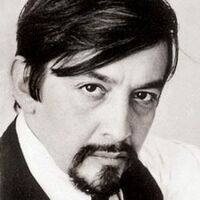
José Carlos Becerra (Villahermosa, Tabasco, 21 de mayo de 1936 - Brindisi, Italia, 27 de mayo de 1970) fue un poeta mexicano. Sobre un poeta, su otoño, sus islas y su niña “Espero una carta todavía no escrita donde el olvido me nombre su heredero”. —José Carlos Becerra Me parece verlo apresurado y desvelado, en los restiradores de la biblioteca de la Facultad, preparando de última hora sus trabajos en papel destraza. Con su barba de candado y su gabardina un poco arrugada; era estudiante de arquitectura en sus ratos libres, pero en la vida real, era POETA. Acababa de terminar su primer libro: “La corona de hierro”. Llegó una mañana a la imprenta que lo publicaría, con la prisa que lo caracterizaba para cambiar el título, al final se llamó: “Relación de los hechos”. ¿Su nombre?: José Carlos Becerra. Nunca lo conocí en persona, nació en Villahermosa, Tabasco en 1936. Los años y la magia de la literatura que es la verdadera máquina del tiempo, me lo presentaron una tarde y es ahora uno de los amigos que más quiero. Apreciado y admirado por todos, hubo fiesta cuando se le otorgó la beca de la Fundación Memorial Guggenheim, premio que ha cambiado las vidas de muchos autores latinoamericanos. Milagro que algunos anhelamos. Se fue a Europa, compró un Volkswagen sedán algo deteriorado, con una puerta chueca y recorrió los lugares testigos del periodo clásico de la humanidad. Era 1970 cuando en Brindisi, Italia, al tomar una curva en la carretera que lo llevaría a un transbordador rumbo a Grecia, perdió el control del auto y se desbarrancó. Murió joven, 33 años. Lejos de su familia y de su amado Tabasco. Un brevísimo aviso de un periódico mexicano, hizo a algunos amigos temer lo peor. Al confirmarse la triste noticia, después de los trámites de traslado y muchas, muchísimas lágrimas, llegó el momento de rescatar sus manuscritos para evitar al tiempo inexorable lo oportunidad de sepultar su obra. Amigos de verdad y colegas de la talla de Octavio Paz, Alí Chumacero, José Emilio Pacheco y Homero Aridjis, colaboraron en ese trabajo de amor y construcción de un volumen de 350 páginas que contiene toda su poesía: “El otoño recorre las islas”. Cabe en un bolsillo, pero contiene la obra de un poeta que vale la pena leer, releer y recordar para toda la vida. Como se dice en estos casos: de haber vivido más, si ya era prodigioso, lo que hubiera logrado. El volumen en cuestión, rescatado y estructurado por sus amigos, contiene su libro publicado en vida, antes citado, y varios otros libros de poesía; también un relato “Fotografía junto a un tulipán”. Es fácil de conseguir, en librerías, editorial Joaquín Mortiz. Pero la historia tuvo una posdata, años después, la joven escritora Silvia Molina, sorprendió a todo México con una magnífica novela autobiográfica llamada “La mañana debe seguir gris”. En ella relata un periodo de su propia vida en el que realiza un viaje a Londres para estudiar inglés; se queda a vivir en la casa de una tía. Silvia era muy joven, 24 años y se enamora perdidamente de un poeta mexicano sin fortuna pero muy prometedor por su talento, diez años mayor que ella. El idilio entre ambos va floreciendo, en el protocolario ambiente británico, bajo la complicidad de amigas y primas y la reprobación autoritaria de su tía. El poeta en cuestión era sumamente simpático, ocurrente y audaz; seductor espontáneo pero de un gran corazón cargado de esperanza. Ese poeta era José Carlos Becerra, en las semanas previas a su muerte. “La mañana debe seguir gris” es una novela breve, dinámica, muy creativa Ofrece una introducción muy original al tema con formato de diario íntimo, donde nos pone al tanto de las circunstancias y nos describe ampliamente el acontecer periodístico, hoy histórico, que rodea los hechos. En 1977 este libro ganó el premio Xavier Villaurrutia, uno de los más prestigiados de México, tras una gran polémica entre los críticos y el jurado del premio. No faltó quien dijo que la historia “demeritaba la figura del gran poeta José Carlos Becerra”. Por favor, como si un joven poeta soltero, no tuviera derecho a enamorarse. Silvia Molina es una de las autoras más jóvenes que ha ganado ese codiciado premio nacional, por cierto muy bien merecido. Aparte de que se trata de una novela que vale mucho la pena leer, nos regala un retrato vivo, nítido y más claro que un video HD, del añorado poeta, muerto a la edad de Jesús y de Ramón López Velarde. Para quienes no tuvimos la fortuna de conocerlo en persona, el relato de Silvia Molina es muy valioso, sobre todo después de terminar la lectura del maravilloso libro de José Carlos que contiene toda su obra. Así pues, en la intimidad de mi Biblioteca, siempre me aseguro de que ambos libros permanezcan juntos. Un amor de juventud que no pudo consumarse en la tierra, se guardará para siempre con sus dos nombres fundidos en la historia de la literatura mexicana. Dejo los títulos de ambos libros uno junto al otro porque, si nos damos cuenta, forman una hermosa frase: “El otoño recorre las islas, la mañana debe seguir gris” – Alfredo Jiménez G.
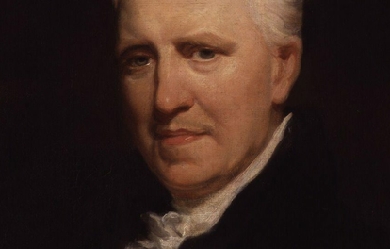

George Crabbe (/kræb/; 24 December 1754– 3 February 1832) was an English poet, surgeon, and clergyman. He is best known for his early use of the realistic narrative form and his descriptions of middle and working-class life and people. In the 1770s, Crabbe began his career as a doctor’s apprentice, later becoming a surgeon. In 1780, he travelled to London to make a living as a poet. After encountering serious financial difficulty and being unable to have his work published, he wrote to the statesman and author Edmund Burke for assistance. Burke was impressed enough by Crabbe’s poems to promise to help him in any way he could. The two became close friends and Burke helped Crabbe greatly both in his literary career and in building a role within the church. Burke introduced Crabbe to the literary and artistic society of London, including Sir Joshua Reynolds and Samuel Johnson, who read The Village before its publication and made some minor changes. Burke secured Crabbe the important position of Chaplain to the Duke of Rutland. Crabbe served as a clergyman in various capacities for the rest of his life, with Burke’s continued help in securing these positions. He developed friendships with many of the great literary men of his day, including Sir Walter Scott, whom he visited in Edinburgh, and William Wordsworth and some of his fellow Lake Poets, who frequently visited Crabbe as his guests. Lord Byron described him as “nature’s sternest painter, yet the best.” Crabbe’s poetry was predominantly in the form of heroic couplets, and has been described as unsentimental in its depiction of provincial life and society. The modern critic Frank Whitehead wrote that “Crabbe, in his verse tales in particular, is an important–indeed, a major–poet whose work has been and still is seriously undervalued.” Crabbe’s works include The Village (1783), Poems (1807), The Borough (1810), and his poetry collections Tales (1812) and Tales of the Hall (1819). Biography Early life Crabbe was born in Aldeburgh, Suffolk, the eldest child of George Crabbe Sr. The elder George Crabbe had been a teacher at a village school in Orford, Suffolk, and later in Norton, near Loddon, Norfolk; he later became a tax collector for salt duties, a position that his own father had held. As a young man he married an older widow named Craddock, who became the mother of his six children: George, his brothers Robert, John, and William, his sister Mary, and another sister who died as an infant. George Jr. spent his first 25 years close to his birthplace. He showed an aptitude for books and learning at an early age. He was sent to school while still very young, and developed an interest in the stories and ballads that were popular among his neighbors. His father owned a few books, and used to read passages from John Milton and from various 18th-century poets to his family. He also subscribed to a country magazine called Martin’s Philosophical Magazine, giving the “poet’s corner” section to George. The senior Crabbe had interests in the local fishing industry, and owned a fishing boat; he had contemplated raising his son George to be a seaman, but soon found that the boy was unsuited to such a career. George’s father respected his son’s interest in literature, and George was sent first to a boarding-school at Bungay near his home, and a few years later to a more important school at Stowmarket, where he gained an understanding of mathematics and Latin, and a familiarity with the Latin classics. His early reading included the works of William Shakespeare, Alexander Pope, who had a great influence on George’s future works, Abraham Cowley, Sir Walter Raleigh and Edmund Spenser. He spent three years at Stowmarket before leaving school to find a physician to be apprenticed to, as medicine had been settled on as his future career. In 1768 he was apprenticed to a local doctor at Wickhambrook, near Bury St Edmunds. This doctor practiced medicine while also keeping a small farm, and George ended up doing more farm labour and errands than medical work. In 1771 he changed masters and moved to Woodbridge, where he remained until 1775. While at Woodbridge he joined a small club of young men who met at an inn for evening discussions. Through his contacts at Woodbridge he met his future wife, Sarah Elmy. Crabbe called her “Mira”, later referring to her by this name in some of his poems. During this time he began writing poetry. In 1772, a lady’s magazine offered a prize for the best poem on the subject of hope, which Crabbe won. The same magazine printed other short pieces of Crabbe’s throughout 1772. They were signed “G. C., Woodbridge,” and included some of his lyrics addressed to Mira. Other known verses written while he was at Woodbridge show that he made experiments in stanza form modeled on the works of earlier English poets, but only showed some slight imitative skill. 1775 to 1785 His first major work, a satirical poem of nearly 400 lines in Pope’s couplet form entitled Inebriety, was self-published in 1775. Crabbe later said of the poem, which received little or no attention at the time, “Pray let not this be seen... there is very little of it that I’m not heartily ashamed of.” By this time he had completed his medical training and had returned home to Aldeburgh. He had intended to go on to London to study at a hospital, but he was forced through low finances to work for some time as a local warehouseman. He eventually travelled to London in 1777 to practice medicine, returning home in financial difficulty after a year. Crabbe continued to practice as a surgeon after returning to Aldeburgh, but as his surgical skills remained deficient, he attracted only the poorest patients, and his fees were small and undependable. This hurt his chances of an early marriage, but Sarah stayed devoted to him. In late 1779 he decided to move to London and see if he could make it as a poet, or, if that failed, as a doctor. He moved to London in April 1780, where he had little success, and by the end of May he had been forced to pawn some of his possessions, including his surgical instruments. He composed a number of works but was refused publication. He wrote several letters seeking patronage, but these were also refused. In June Crabbe witnessed instances of mob violence during the Gordon Riots, and recorded them in his journal. He was able to publish a poem at this time entitled The Candidate, but it was badly received by critics. He continued to rack up debts that he had no way of paying, and his creditors pressed him. He later told Walter Scott and John Gibson Lockhart that “during many months when he was toiling in early life in London he hardly ever tasted butchermeat except on a Sunday, when he dined usually with a tradesman’s family, and thought their leg of mutton, baked in the pan, the perfection of luxury.” In early 1781 he wrote a letter to Edmund Burke asking for help, in which he included samples of his poetry. Burke was swayed by Crabbe’s letter and a subsequent meeting with him, giving him money to relieve his immediate wants, and assuring him that he would do all in his power to further Crabbe’s literary career. Among the samples that Crabbe had sent to Burke were pieces of his poems The Library and The Village. A short time after their first meeting Burke told his friend Sir Joshua Reynolds that Crabbe had “the mind and feelings of a gentleman.” Burke gave Crabbe the footing of a friend, admitting him to his family circle at Beaconsfield. There he was given an apartment, supplied with books, and made a member of the family. The time he spent with Burke and his family helped by enlarging his knowledge and ideas, and introducing him to many new and valuable friends including Charles James Fox and Samuel Johnson. He completed his unfinished poems and revised others with the help of Burke’s criticism. Burke helped him have his poem, The Library, published anonymously in June 1781, by a publisher that had previously refused some of his work. The Library was greeted with modest praise from critics, and slight public appreciation. Through their friendship, Burke discovered that Crabbe was more suited to be a clergyman than a surgeon. Crabbe had a good knowledge of Latin and an evident natural piety, and was well read in the scriptures. He was ordained to the curacy of his native town on 21 December 1781 through Burke’s recommendation. He returned to live in Aldeburgh with his sister and father, his mother having died in his absence. Crabbe was surprised to find that he was poorly treated by his fellow townsmen, who resented his rise in social class. With Burke’s help, Crabbe was able to leave Aldeburgh to become chaplain to the Duke of Rutland at Belvoir Castle in Leicestershire. This was an unusual move on Burke’s part, as this kind of preferment would usually have been given to a family member or personal friend of the Duke or through political interest. Crabbe’s experience as Chaplain at Belvoir was not altogether happy. He was treated with kindness by the Duke and Duchess, but his slightly unpolished manners and his position as a literary dependent made his relations with others in the Duke’s house difficult, especially the servants. However, the Duke and Duchess and many of their noble guests shared an interest in Crabbe’s literary talent and work. During his time there, his poem The Village was published in May 1783, achieving popularity with the public and critics. Samuel Johnson said of the poem in a letter to Reynolds “I have sent you back Mr. Crabbe’s poem, which I read with great delight. It is original, vigorous, and elegant.” Johnson’s friend and biographer James Boswell also praised The Village. It was said at the time of publication that Johnson had made extensive changes to the poem, but Boswell responded by saying that “the aid given by Johnson to the poem, as to The Traveller and Deserted Village of Goldsmith, were so small as by no means to impair the distinguished merit of the author.” Crabbe was able to keep up his friendships with Burke, Reynolds, and others during the Duke’s occasional visits to London. He visited the theatre, and was impressed with the actresses Sarah Siddons and Dorothea Jordan. Around this time it was decided that, as Chaplain to a noble family, Crabbe was in need of a college degree, and his name was entered on the boards of Trinity College, Cambridge, through the influence of Bishop Watson of Llandaff, so that Crabbe could obtain a degree without residence. This was in 1783, but almost immediately afterwards he received an LL.B. degree from the Archbishop of Canterbury. This degree allowed Crabbe to be given two small livings in Dorsetshire, Frome St Quintin and Evershot. This promotion does not seem to have interfered with Crabbe’s residence at Belvoir or in London; it is likely that curates were placed in these situations. On the strength of these preferments and a promise of future assistance from the Duke, Crabbe and Sarah Elmy were married in December 1783, in the parish church of Beccles, where Miss Elmy’s mother lived, and a few weeks later went to live together at Belvoir Castle. In 1784 the Duke of Rutland became Lord Lieutenant of Ireland. It was decided that Crabbe was not to be on the Duke’s staff in Ireland, though the two men parted as close friends. The young couple stayed on at Belvoir for nearly another eighteen months before Crabbe accepted a vacant curacy in the neighbourhood, that of Stathern in Leicestershire, where Crabbe and his wife moved in 1785. A child had been born to them at Belvoir, dying only hours after birth. During the following four years at Stathern they had three other children; two sons, George and John, in 1785 and 1787, and a daughter in 1789, who died in infancy. Crabbe later told his children that his four years at Stathern were the happiest of his life. 1785 to 1810 In October 1787 the Duke of Rutland died at the Vice-Regal Lodge in Dublin, after a short illness, at the early age of 35. Crabbe assisted at the funeral at Belvoir. The Duchess, anxious to have their former chaplain close by, was able to get Crabbe the two livings of Muston, Leicestershire, and Allington, Lincolnshire, in exchange for his old livings. Crabbe brought his family to Muston in February 1789. His connection with the two livings lasted for over 25 years, but during 13 of these years he was a non-resident. He stayed three years at Muston. Another son, Edmund, was born in 1790. In 1792, through the death of one of Sarah’s relations and soon after of her older sister, the Crabbe family came into possession of an estate in Parham, which removed all of their financial worries. Crabbe soon moved his family to this estate. Their son William was born the same year. Crabbe’s life at Parham was not happy. The former owner of the estate had been very popular for his hospitality, while Crabbe’s lifestyle was much more quiet and private. His solace here was the company of his friend Dudley Long North and his fellow Whigs who lived nearby. Crabbe soon sent his two sons George and John to school in Aldeburgh. After four years at Parham, the Crabbes moved to a home in Great Glemham, Suffolk, placed at his disposal by Dudley North. The family remained here for four or five years. In 1796 their third son, Edmund died at the age of six. This was a heavy blow to Sarah who began suffering from a nervous disorder from which she never recovered. Crabbe, a devoted husband, tended her with exemplary care until her death in 1813. Robert Southey, writing about Crabbe to his friend, Neville White, in 1808, said “It was not long before his wife became deranged, and when all this was told me by one who knew him well, five years ago, he was still almost confined in his own house, anxiously waiting upon this wife in her long and hopeless malady. A sad history! It is no wonder that he gives so melancholy a picture of human life.” During his time at Glemham, Crabbe composed several novels, none of which were published. After Glemham, Crabbe moved to the village of Rendham in Suffolk, where he stayed until 1805. His poem The Parish Register was all but completed while at Rendham, and The Borough was also begun. 1805 was the last year of Crabbe’s stay in Suffolk, and it was made memorable in literature by the appearance of the Lay of the Last Minstrel by Walter Scott. Crabbe first saw it in a bookseller’s shop in Ipswich, read it nearly through while standing at the counter, and pronounced that a new and great poet had appeared. In October 1805, Crabbe returned with his wife and two sons to the parsonage at Muston. He had been absent for nearly 13 years, of which four had been spent at Parham, five at Great Glemham, and four at Rendham. In September 1807, Crabbe published a new volume of poems. Included in this volume were The Library, The Newspaper, and The Village; the principal new poem was The Parish Register, to which were added Sir Eustace Grey and The Hall of Justice. The volume was dedicated to Henry Vassall-Fox, 3rd Baron Holland, nephew and sometime ward of Charles James Fox. An interval of 22 years had passed since Crabbe’s last appearance as an author, and he explained in the preface to this volume the reasons for this lapse as being his higher calling as a clergyman and his slow progress in poetical ability. This volume led to Crabbe’s general acceptance as an important poet. Four editions were issued during the following year and a half, the fourth appearing in March 1809. The reviews were unanimous in approval, headed by Francis Jeffrey in the Edinburgh Review. In 1809 Crabbe sent a copy of his poems in their fourth edition to Walter Scott, who acknowledged them in a friendly reply. Scott told Crabbe “how for more than twenty years he had desired the pleasure of a personal introduction to him, and how, as a lad of eighteen, he had met with selections from The Village and The Library in The Annual Register.” This exchange of letters led to a friendship that lasted for the rest of their lives, both authors dying in 1832. Crabbe’s favorite among Scott’s “Waverley” novels was The Heart of Midlothian. The success of The Parish Register in 1807 encouraged Crabbe to proceed with a far longer poem, which he had been working on for several years. The Borough was begun at Rendham in Suffolk in 1801, continued at Muston after his return in 1805, and finally completed during a long visit to Aldeburgh in the autumn of 1809. It was published in 1810. In spite of its defects, The Borough was an outright success. The poem appeared in February 1810, and went through six editions in the next six years. When he visited London a few years later and was received with general welcome in the literary world, he was very surprised. “In my own village,” he told James Smith, “they think nothing of me.” The three years following the publication of The Borough were especially lonely for him. He did have his two sons, George and John, with him; they had both passed through Cambridge, one at Trinity and the other at Caius, and were now clergymen themselves, each holding a curacy in the neighbourhood, enabling them to live under the parental roof, but Mrs. Crabbe’s health was now very poor, and Crabbe had no daughter or female relative at home to help him with her care. Later life Crabbe’s next volume of poetry, Tales was published in the summer of 1812. It received a warm welcome from the poet’s admirers, and was favorably reviewed by Jeffrey in the Edinburgh Review and is considered to be his masterpiece. In the summer of 1813, Mrs. Crabbe felt well enough to want to see London again, and the father and mother and two sons spent nearly three months in rooms in a hotel. Crabbe was able to visit Dudley North and some of his other old friends, and to visit and help the poor and distressed, remembering his own want and misery in the great city thirty years earlier. The family returned to Muston in September, and Mrs. Crabbe died at the end of October at the age of 63. Within days of his wife’s death Crabbe fell seriously ill, and was in danger of dying. He rallied, however, and returned to the duties of his parish. In 1814, he became Rector of Trowbridge in Wiltshire, a position given to him by the new Duke of Rutland. He remained at Trowbridge for the rest of his life. His two sons followed him, as soon as their existing engagements allowed them to leave Leicestershire. The younger, John, who married in 1816, became his father’s curate, and the elder, who married a year later, became curate at Pucklechurch, also nearby. Crabbe’s reputation as a poet continued to grow in these years. His growing reputation soon made him a welcome guest in many houses to which his position as vicar of Trowbridge might not have admitted him. Nearby was the poet William Lisle Bowles, who introduced Crabbe to the noble family at Bowood House, home of the Marquess of Lansdowne, who was always ready to welcome those distinguished in literature and the arts. It was at Bowood House that Crabbe first met the poet Samuel Rogers, who became a close friend and had an influence on Crabbe’s poetry. In 1817, on the recommendation of Rogers, Crabbe stayed in London from the middle of June to the end of July in order to enjoy the literary society of the capital. While there he met Thomas Campbell, and through him and Rogers was introduced to his future publisher John Murray. In June 1819, Crabbe published his collection Tales of the Hall. The last 13 years of Crabbe’s life were spent at Trowbridge, varied by occasional visits among his friends at Bath and the surrounding neighbourhood, and by yearly visits to his friend Samuel Hoare Jr in Hampstead. From here it was easy to visit his literary friends in London, while William Wordsworth, Southey, and others occasionally stayed with the family. Around 1820 Crabbe began suffering from frequent severe attacks of neuralgia, and this illness, together with his age, made him less and less able to travel to London. In the spring of 1822, Crabbe met Walter Scott for the first time in London, and promised to visit him in Scotland in the fall. He kept this promise during George IV’s visit to Edinburgh, in the course of which the King met Scott and the poet was given a wine glass from which the King had drunk. Scott returned from the meeting with the King to find Crabbe at his home. As John Gibson Lockhart related in his Life of Sir Walter Scott, Scott entered the room that had been set aside for Crabbe, wet and hurried, and embraced Crabbe with brotherly affection. The royal gift was forgotten—the ample skirt of the coat within which it had been packed, and which he had hitherto held cautiously in front of his person, slipped back to its more usual position—he sat down beside Crabbe, and the glass was crushed to atoms. His scream and gesture made his wife conclude that he had sat down on a pair of scissors, or the like: but very little harm had been done except the breaking of the glass. Later in 1822, Crabbe was invited to spend Christmas at Belvoir Castle, but was unable to make the trip because of the winter weather. While at home, he continued to write a large amount of poetry, leaving 21 manuscript volumes at his death. A selection from these formed the Posthumous Poems, published in 1834. Crabbe continued to visit at Hampstead throughout the 1820s, often meeting the writer Joanna Baillie and her sister Agnes. In the autumn of 1831, Crabbe visited the Hoares. He left them in November, expressing his pain and sadness at leaving in a letter, feeling that it might be the last time he saw them. He left Clifton in November, and went direct to his son George, at Pucklechurch. He was able to preach twice for his son, who congratulated him on the power of his voice, and other encouraging signs of strength. “I will venture a good sum, sir,” he said, “that you will be assisting me ten years hence.” “Ten weeks” was Crabbe’s answer, and the prediction was right almost to the day. After a short time at Pucklechurch, Crabbe returned to his home at Trowbridge. Early in January he reported continued drowsiness, which he felt was a sign of increasing weakness. Later in the month he was prostrated by a severe cold. Other complications arose, and it soon became apparent that he would not live much longer. He died on 3 February 1832, with his two sons and his faithful nurse by his side. Poetry Crabbe’s poetry was predominantly in the form of heroic couplets, and has been described as unsentimental in its depiction of provincial life and society. John Wilson wrote that “Crabbe is confessedly the most original and vivid painter of the vast varieties of common life that England has ever produced;” and that “In all the poetry of this extraordinary man, we see a constant display of the passions as they are excited and exacerbated by the customs, laws, and institutions of society.” The Cambridge History of English Literature saw Crabbe’s importance to be more in his influence than in his works themselves: “He gave the poetry of nature new worlds to conquer (rather than conquered them himself) by showing that the world of plain fact and common detail may be material for poetry”. Although Augustan literature played an important role in Crabbe’s life and poetical career, his body of work is unique and difficult to classify. His best works are an original achievement in a new realistic poetical form. The major factor in Crabbe’s evolving from the Augustan influence to his use of realistic narrative was the changing readership of the late 18th–early 19th century. In the mid-18th century, literature was confined to the aristocratic and highly educated class; with the rise of the middle class at the turn of the 19th century, which came with a growing number of provincial papers, the heightening in production of books in weekly installments, and the establishment of circulating libraries, the need for literature was spread throughout the middle class. Narrative poetry was not a generally accepted mode in Augustan literature, making the narrative form of Crabbe’s mature works an innovation. This was due to some extent to the rise in popularity of the novel in the late 18th–early 19th century. Another innovation is the attention that Crabbe pays to details, both in description and characterization. Augustan critics had espoused the view that minute details should be avoided in favor of generality. Crabbe also broke with Augustan tradition by not dealing with exalted and aristocratic characters, but rather choosing people from middle and working-class society. Poor characters like Crabbe’s often anthologized “Peter Grimes” from The Borough would have been completely unacceptable to Augustan critics. In this way, Crabbe created a new way of presenting life and society in poetry. Criticism Wordsworth predicted that Crabbe’s poetry would last “from its combined merits as truth and poetry fully as long as anything that has been expressed in verse since it first made its appearance”, though on another occasion, according to Henry Crabb Robinson, he “blamed Crabbe for his unpoetical mode of considering human nature and society.” This last opinion was also held by William Hazlitt, who complained that Crabbe’s characters “remind one of anatomical preservations; or may be said to bear the same relation to actual life that a stuffed cat in a glass-case does to the real one purring on the hearth.” Byron, besides what he said in English Bards and Scotch Reviewers, declared, in 1816, that he considered Crabbe and Coleridge “the first of these times in point of power and genius.” Byron had felt that English poetry had been steadily on the decline since the depreciation of Pope, and pointed to Crabbe as the last remaining hope of a degenerate age. Other admirers included Jane Austen, Alfred, Lord Tennyson and Sir Walter Scott, who used numerous quotes from Crabbe’s poems in his novels. During Scott’s final illness, Crabbe was the last writer he asked to have read to him. Lord Byron admired Crabbe’s poetry, and called him “nature’s sternest painter, yet the best”. According to critic Frank Whitehead, “Crabbe, in his verse tales in particular, is an important—indeed, a major—poet whose work has been and still is seriously undervalued.” His early poems, which were non-narrative essays in poetical form, gained him the approval of literary men like Samuel Johnson, followed by a period of 20 years in which he wrote much, destroying most of it, and published nothing. In 1807, he published his volume Poems which started off the new realistic narrative method that characterized his poetry for the rest of his career. Whitehead states that this narrative poetry, which occupies the bulk of Crabbe’s output, should be at the center of modern critical attention. Q. D. Leavis said of Crabbe: “He is (or ought to be—for who reads him?) a living classic.” His classic status was also supported by T. S. Eliot in an essay on the poetry of Samuel Johnson in which Eliot grouped Crabbe together favorably with Johnson, Pope, and several other poets. Eliot said that “to have the virtues of good prose is the first and minimum requirement of good poetry.” Critic Arthur Pollard believes that Crabbe definitely met this qualification. Critic William Caldwell Roscoe, answering William Hazlitt’s question of why Crabbe hadn’t in fact written prose rather than verse said “have you ever read Crabbe’s prose? Look at his letters, especially the later ones, look at the correct but lifeless expression of his dedications and prefaces—then look at his verse, and you will see how much he has exceeded 'the minimum requirement of good poetry’.” Critic F. L. Lucas summed up Crabbe’s qualities: "naïve, yet shrewd; straightforward, yet sardonic; blunt, yet tender; quiet, yet passionate; realistic, yet romantic." Crabbe, who is seen as a complicated poet, has been and often still is dismissed as too narrow in his interests and in his way of responding to them in his poetry. “At the same time as the critic is making such judgments, he is all too often aware that Crabbe, nonetheless, defies classification,” says Pollard. Pollard has attempted to examine the negative views of Crabbe and the reasons for limited readership since his lifetime: "Why did Crabbe’s 'realism’ and his discovery of what in effect was the short story in verse fail to appeal to the fiction-dominated Victorian age? Or is it that somehow psychological analysis and poetry are uneasy bedfellows? But then why did Browning succeed and Crabbe descend to the doldrums or to the coteries of admiring enthusiasts? And why have we in this century (the 20th century) failed to get much nearer to him? Does this mean that each succeeding generation must struggle to find his characteristic and essential worth? FitzGerald was only one of many among those who would make 'cullings from’ or 'readings in’ Crabbe. The implications of such selection are clearly that, though much has vanished, much deserves to remain.” Entomology Crabbe was known as a coleopterist and recorder of beetles, and is credited for discovering the first specimen of Calosoma sycophanta L. to be recorded from Suffolk. He published an essay on the Natural History of the Vale of Belvoir in John Nichols’s, Bibliotheca Topographia Britannica, VIII, Antiquities in Leicestershire, 1790. It includes a very extensive list of local coleopterans, and references more than 70 species. Bibliography * Inebriety (published 1775) * The Candidate (published 1780) * The Library (published 1781) * The Village (published 1782) * The Newspaper (published 1785) * Poems (published 1807) * The Borough (published 1810) * Tales in Verse (published 1812) * Tales of the Hall (published 1819) * Posthumous Tales (published 1834) Adaptations * Benjamin Britten’s opera Peter Grimes is based on The Borough. Britten also set an extract from The Borough as the third of his Five Flower Songs, op. 47. Charles Lamb’s verse play The Wife’s Trial; or, The Intruding Widow, written in 1827 and published the following year in Blackwood’s Magazine, was based on Crabbe’s tale “The Confidant”. References Wikipedia—https://en.wikipedia.org/wiki/George_Crabbe
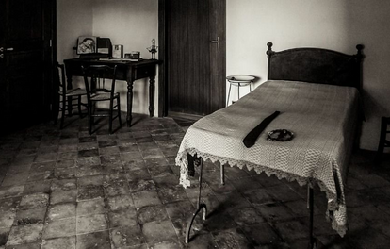
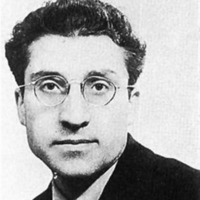
Cesare Pavese (Santo Stefano Belbo, 9 settembre 1908 – Torino, 27 agosto 1950) è stato uno scrittore, poeta, traduttore e critico letterario italiano. Viene considerato uno dei maggiori intellettuali italiani del XX secolo. Biografia L’infanzia Cesare Pavese nacque a Santo Stefano Belbo, un paesino delle Langhe sito nella provincia di Cuneo, presso il cascinale di San Sebastiano, dove la famiglia soleva trascorrere le estati, il 9 settembre del 1908. Il padre, Eugenio Pavese, originario anch’egli di Santo Stefano Belbo, era cancelliere presso il Palazzo di Giustizia di Torino, dove risiedeva con la moglie, Fiorentina Consolina Mesturini, proveniente da una famiglia di abbienti commercianti originari di Ticineto (in provincia di Alessandria), e la primogenita Maria (nata nel 1902), in un appartamento in via XX Settembre 79. Malgrado l’agiatezza economica, l’infanzia di Pavese non fu felice: una sorella e due fratelli, nati prima di lui, erano morti prematuramente. La madre, di salute cagionevole, dovette affidarlo, appena nato, a una balia del vicino paese di Montecucco e poi, quando lo riprese con sé a Torino, a un’altra balia, Vittoria Scaglione. Il padre morì di un cancro al cervello il 2 gennaio del 1914; Cesare aveva cinque anni. Come è stato scritto, «c’erano già tutti i motivi – familiari e affettivi – per far crescere precocemente il piccolo Cesare [...] per una preistoria umana e letteraria che avrebbe accompagnato e segnato la vita dello scrittore». La madre, di carattere autoritario, dovette allevare da sola i due figli: la sua educazione rigorosa contribuì ad accentuare il carattere già introverso e instabile di Cesare. Gli studi Nell’autunno dello stesso 1914, la sorella si ammalò di tifo e la famiglia dovette rimanere a Santo Stefano Belbo, dove Cesare frequentò la prima elementare; le altre quattro classi del ciclo le compì a Torino nell’istituto privato “Trombetta” di via Garibaldi. Come scrive Armanda Guiducci, «S. Stefano fu il luogo della sua memoria e immaginazione; il luogo reale della sua vita, per quarant’anni, fu Torino». Lungo lo stradone che da Santo Stefano Belbo porta a Canelli, nella bottega del falegname Scaglione, Cesare conobbe Pinolo, il più piccolo dei figli del falegname, che descriverà in alcune opere, soprattutto La luna e i falò (come Nuto) e a cui rimarrà sempre legato. Nel 1916 la madre, non riuscendo più a sostenere la gestione dei mezzadri e le spese, decise di vendere la cascina di San Sebastiano e andare a vivere con i figli in una villetta nella località collinare di Reaglie. A Torino Cesare frequentò le scuole medie presso l’Istituto Sociale dei gesuiti, poi si iscrisse al Liceo classico Cavour dove scelse il ginnasio con l’indirizzo moderno (Liceo moderno), che non prevedeva lo studio della lingua greca. Incominciò ad appassionarsi alla letteratura, in particolare ai romanzi di Guido da Verona e di Gabriele D’Annunzio. Con il compagno di studi Mario Sturani incominciò un’amicizia durata tutta la vita e prese a frequentare la Biblioteca Civica, scrivendo i primi versi. Nell’ottobre 1923 Pavese si iscrisse al liceo D’Azeglio e scoprì, in particolare, l’opera di Alfieri. Trascorse gli anni di liceo tra i primi amori adolescenziali e le amicizie, come quella con Tullio Pinelli, cui farà leggere per primo il dattiloscritto di Paesi tuoi e scriverà una lettera prima del suicidio. Cesare rimase a lungo a casa da scuola a causa di una pleurite che si era preso rimanendo a lungo sotto la pioggia per aspettare una cantante ballerina di varietà in un locale frequentato dagli studenti, della quale si era innamorato. Era il 1925 e frequentava la seconda liceo. L’anno seguente fu scosso profondamente dalla tragica morte di un suo compagno di classe, Elico Baraldi, che si era tolto la vita con un colpo di rivoltella. Pavese ebbe la tentazione di emulare quel gesto, come testimonia la poesia inviata il 9 gennaio 1927 all’amico Sturani. Il suo insegnante di italiano e latino fu l’antifascista Augusto Monti, che gli insegnò un metodo rigoroso di studio improntato all’estetica crociana frammista ad alcune concezioni di De Sanctis. Nel 1926, conseguita la maturità liceale, inviò alla rivista “Ricerca di poesia” alcune liriche, che furono però respinte. Si iscrisse intanto alla Facoltà di lettere dell’Università di Torino e continuò a scrivere e a studiare con grande fervore l’inglese, appassionandosi alla lettura di Sherwood Anderson, Sinclar Lewis e soprattutto Walt Whitman, mentre le sue amicizie si allargarono a coloro che diventeranno, in seguito, intellettuali antifascisti di spicco: Leone Ginzburg, Norberto Bobbio, Massimo Mila e Giulio Einaudi. L’interesse per la letteratura americana divenne sempre più rilevante e così incominciò ad accumulare materiale per la sua tesi di laurea, mentre proseguivano i timidi amori permeati dalla sua visione angelicante della donna. Intanto si immergeva sempre più nella vita cittadina, e così scriveva all’amico Tullio Pinelli: Leggendo Babbit di Sinclair Lewis, Pavese volle capire a fondo lo slang. Incominciò così una fitta corrispondenza con un giovane musicista italoamericano, Antonio Chiuminatto, conosciuto qualche anno prima a Torino, che lo aiutò ad approfondire l’americano a lui più contemporaneo. Così scrisse al corrispondente d’oltreoceano: Negli anni successivi, proseguì gli studi con passione, scrisse versi e lesse molto, soprattutto autori americani come Hemingway, Lee Masters, Cummings, Lowell, e la Stein; incominciò a tradurre per l’editore Bemporad Our Mr. Wrenn di Sinclair Lewis e scrisse per Arrigo Cajumi, membro del comitato direttivo della rivista “La Cultura”, il suo primo saggio sull’autore di Babbitt, cominciando così la serie detta Americana. Nel 1930 presentò la sua tesi di laurea “Sulla interpretazione della poesia di Walt Whitman” ma Federico Oliviero, il professore con il quale doveva discuterla, la rifiutò all’ultimo momento perché troppo improntata all’estetica crociana e quindi scandalosamente liberale per l’età fascista. Intervenne però Leone Ginzburg: la tesi venne così accettata dal professore di Letteratura francese Ferdinando Neri e Pavese poté laurearsi con 108/110. L’attività di traduttore e l’insegnamento Nello stesso anno morì la madre e Pavese rimase ad abitare nella casa materna con la sorella Maria, dove visse fino al penultimo giorno della sua vita e incominciò, per guadagnare, l’attività di traduttore in modo sistematico alternandola all’insegnamento della lingua inglese. Per un compenso di 1000 lire tradusse Moby Dick di Herman Melville e Riso nero di Anderson. Scrisse un saggio sullo stesso Anderson e, ancora per “La Cultura”, un articolo sull’Antologia di Spoon River, uno su Melville e uno su O. Henry. Risale a questo stesso anno la prima poesia di Lavorare stanca. Ottenne anche alcune supplenze nelle scuole di Bra, Vercelli e Saluzzo e incominciò anche a impartire lezioni private e a insegnare nelle scuole serali. Nel periodo che va dal settembre 1931 al febbraio 1932 Pavese compose un ciclo di racconti e poesie dal titolo Ciau Masino rimasto a lungo inedito, che verrà pubblicato per la prima volta nel 1968 in edizione fuori commercio e contemporaneamente nel primo volume dei Racconti delle “Opere di Cesare Pavese”. Nel 1933, per poter insegnare nelle scuole pubbliche si arrese, pur malvolentieri, alle insistenze della sorella e di suo marito e si iscrisse al partito nazionale fascista, cosa che rimprovererà più tardi alla sorella Maria in una lettera del 29 luglio 1935 scritta dal carcere di Regina Coeli: “A seguire i vostri consigli, e l’avvenire e la carriera e la pace ecc., ho fatto una prima cosa contro la mia coscienza”. Continuava intanto l’attività di multilingua, che terminò solamente nel 1947. Nel 1933 tradusse Il 42º parallelo di John Dos Passos e Ritratto dell’artista da giovane di James Joyce. Ebbe inizio in questo periodo un tormentato rapporto sentimentale con Tina Pizzardo, la “donna dalla voce rauca” alla quale dedicherà i versi di Incontro nella raccolta Lavorare stanca. L’incarico all’Einaudi Giulio Einaudi aveva intanto fondato la sua casa editrice. Le due riviste, “La riforma sociale” di Luigi Einaudi e “La Cultura”, che era stata concepita da Cesare De Lollis e in quel momento era diretta da Cajumi, si fusero dando vita a una nuova “La Cultura” della quale doveva diventare direttore Leone Ginzburg. Ma molti partecipanti del movimento "Giustizia e Libertà", tra cui anche Ginzburg, all’inizio del 1934 vennero arrestati e la direzione della rivista passò a Sergio Solmi. Pavese, intanto, fece domanda alla casa editrice per poter sostituire Ginzburg e, dal maggio di quell’anno, essendo egli tra i meno compromessi politicamente, incominciò la collaborazione con l’Einaudi dirigendo per un anno “La Cultura” e curando la sezione di etnologia. Sempre nel 1934, grazie alla raccomandazione di Ginzburg, riuscì a inviare ad Alberto Carocci, direttore a Firenze della rivista Solaria, le poesie di Lavorare stanca che vennero lette da Elio Vittorini con parere positivo tanto che Carocci ne decise la pubblicazione. L’arresto e la condanna per antifascismo Nel 1935 Pavese, intenzionato a proseguire nell’insegnamento, si dimise dall’incarico all’Einaudi e incominciò a prepararsi per affrontare il concorso di latino e greco ma, il 15 maggio, una delazione dello scrittore Dino Segre portò agli arresti di intellettuali aderenti a "Giustizia e Libertà", venne fatta una perquisizione nella casa di Pavese, sospettato di frequentare il gruppo di intellettuali a contatto con Ginzburg, e venne trovata, tra le sue carte, una lettera di Altiero Spinelli detenuto per motivi politici nel carcere romano. Accusato di antifascismo, Pavese venne arrestato e incarcerato dapprima alle Nuove di Torino, poi a Regina Coeli a Roma e, in seguito al processo, venne condannato a tre anni di confino a Brancaleone Calabro. Ma Pavese, in realtà, era innocente, poiché la lettera trovata era rivolta a Tina Pizzardo, la “donna dalla voce rauca” della quale era innamorato. Tina era però politicamente impegnata e iscritta al Partito comunista d’Italia clandestino e continuava ad avere contatti epistolari con Spinelli e le lettere pervenivano a casa di Pavese che le aveva permesso di utilizzare il suo indirizzo. Il 4 agosto 1935 Pavese giunse quindi in Calabria, a Brancaleone, e qui scrisse ad Augusto Monti «Qui i paesani mi hanno accolto umanamente, spiegandomi che, del resto, si tratta di una loro tradizione e che fanno così con tutti. Il giorno lo passo “dando volta”, leggicchio, ristudio per la terza volta il greco, fumo la pipa, faccio venir notte; ogni volta indignandomi che, con tante invenzioni solenni, il genio italico non abbia ancora escogitato una droga che propini il letargo a volontà, nel mio caso per tre anni. Per tre anni! Studiare è una parola; non si può niente che valga in questa incertezza di vita, se non assaporare in tutte le sue qualità e quantità più luride la noia, il tedio, la seccaggine, la sgonfia, lo spleen e il mal di pancia. Esercito il più squallido dei passatempi. Acchiappo le mosche, traduco dal greco, mi astengo dal guardare il mare, giro i campi, fumo, tengo lo zibaldone, rileggo la corrispondenza dalla patria, serbo un’inutile castità». Nell’ottobre di quell’anno aveva incominciato a tenere quello che nella lettera al Lajolo definisce lo “zibaldone”, cioè un diario che diventerà in seguito Il mestiere di vivere e aveva fatto domanda di grazia, con la quale ottenne il condono di due anni. Nel 1936, durante il suo confino, venne pubblicata la prima edizione della raccolta poetica Lavorare stanca che, malgrado la forma fortemente innovativa, passò quasi inosservata. Il ritorno a Torino Verso la fine del 1936, terminato l’anno di confino, Pavese fece ritorno a Torino e dovette affrontare la delusione di sapere che Tina stava per sposarsi con un altro e che le sue poesie erano state ignorate. Per guadagnarsi da vivere riprese il lavoro di traduttore e nel 1937 tradusse Un mucchio di quattrini (The Big Money) di John Dos Passos per Mondadori e Uomini e topi di Steinbeck per Bompiani. Dal 1º maggio accettò di collaborare, con un lavoro stabile e per lo stipendio di mille lire al mese, con la Einaudi, per le collane “Narratori stranieri tradotti” e “Biblioteca di cultura storica”, traducendo Fortune e sfortune della famosa Moll Flanders di Defoe e l’anno dopo La storia e le personali esperienze di David Copperfield di Dickens oltre all’Autobiografia di Alice Toklas della Stein. Il passaggio alla prosa Nel frattempo incominciò a scrivere i racconti che verranno pubblicati postumi, dapprima nella raccolta “Notte di festa” e in seguito nel volume de I racconti e fra il 27 novembre del 1936 e il 16 aprile del 1939 completò la stesura del suo primo romanzo breve tratto dall’esperienza del confino intitolato Il carcere (il primo titolo era stato Memorie di due stagioni) che verrà pubblicato dieci anni dopo. Dal 3 giugno al 16 agosto scrisse Paesi tuoi che verrà pubblicato nel 1941 e sarà la prima opera di narrativa dello scrittore data alle stampe. Si andava intanto intensificando, dopo il ritorno dal confino di Leone Ginzburg da Pizzoli, negli Abruzzi, l’attività del gruppo clandestino di "Giustizia e Libertà" e quella dei comunisti con a capo Ludovico Geymonat. Pavese, che era chiaramente antifascista, venne coinvolto e, al di qua di una precisa e dichiarata definizione politica, incominciò ad assistere con crescente interesse alle frequenti discussioni che avvenivano a casa degli amici. Conobbe in questo periodo Giaime Pintor che collaborava ad alcune riviste letterarie ed era inserito alla Einaudi come traduttore dal tedesco e come consulente e nacque tra loro una salda amicizia. Il periodo della guerra Nel 1940 l’Italia era intanto entrata in guerra e Pavese era coinvolto in una nuova avventura sentimentale con una giovane universitaria che era stata sua allieva al liceo D’Azeglio e che gli era stata presentata da Norberto Bobbio. La ragazza, giovane e ricca di interessi culturali, si chiamava Fernanda Pivano e colpì lo scrittore a tal punto che il 26 luglio le propose il matrimonio; malgrado il rifiuto della giovane, l’amicizia continuò. Alla Pivano Pavese dedicò alcune poesie, tra le quali Mattino, Estate e Notturno, che inserì nella nuova edizione di Lavorare stanca. Lajolo scrive che "Per cinque anni Fernanda fu la sua confidente, ed è in lei che Pavese tornò a sperare per avere una casa ed un amore. Ma anche quella esperienza – così diversa – si concluse per lui con un fallimento. Sul frontespizio di Feria d’agosto sono segnate due date: 26 luglio 1940, 10 luglio 1945, che ricordano le due domande di matrimonio fatte a Fernanda, con le due croci che rappresentano il significato delle risposte". In quell’anno Pavese scrisse La bella estate (il primo titolo sarà La tenda), che verrà pubblicato nel 1949 nel volume dal titolo omonimo che comprende anche i romanzi brevi Il diavolo sulle colline e Tra donne sole; tra il 1940 e il 1941 scrisse La spiaggia, che vedrà una prima pubblicazione nel 1942 su “Lettere d’oggi” di Giambattista Vicari. Nel 1941, con la pubblicazione di Paesi tuoi, e quindi l’esordio narrativo di Pavese, la critica sembrò accorgersi finalmente dell’autore. Intanto, nel 1942, Pavese venne regolarmente assunto dalla Einaudi con mansioni di impiegato di prima categoria e con il doppio dello stipendio sulla base del contratto nazionale collettivo di lavoro dell’industria. Nel 1943 Pavese venne trasferito per motivi editoriali a Roma dove gli giunse la cartolina di precetto ma, a causa della forma d’asma di origine nervosa di cui soffriva, dopo sei mesi di convalescenza all’Ospedale militare di Rivoli venne dispensato dalla leva militare e ritornò a Torino che nel frattempo aveva subito numerosi bombardamenti e che trovò deserta dai numerosi amici, mentre sulle montagne si stavano organizzando le prime formazioni partigiane. Nel 1943, dopo l’8 settembre, Torino venne occupata dai tedeschi e anche la casa editrice venne occupata da un commissario della Repubblica sociale italiana. Pavese, a differenza di molti suoi amici che si preparavano alla lotta clandestina, si rifugiò a Serralunga di Crea, piccolo paese del Monferrato, dov’era sfollata la sorella Maria e dove strinse amicizia con il conte Carlo Grillo, che diventerà il protagonista de Il diavolo sulle colline. A dicembre, per sfuggire a una retata da parte dei repubblichini e dei tedeschi, chiese ospitalità presso il Collegio Convitto dei padri Somaschi di Casale Monferrato dove, per sdebitarsi, dava ripetizioni agli allievi. Leggeva e scriveva apparentemente sereno. Il 1º marzo, mentre si trovava ancora a Serralunga, gli giunse la notizia della tragica morte di Leone Ginzburg avvenuta sotto le torture nel carcere di Regina Coeli. Il 3 marzo scriverà: «L’ho saputo il 1º marzo. Esistono gli altri per noi? Vorrei che non fosse vero per non star male. Vivo come in una nebbia, pensandoci sempre ma vagamente. Finisce che si prende l’abitudine a questo stato, in cui si rimanda sempre il dolore vero a domani, e così si dimentica e non si è sofferto». Gli anni del dopoguerra (1945-1950) L’iscrizione al Partito comunista e l’attività a "L’Unità" Ritornato a Torino dopo la liberazione, venne subito a sapere che tanti amici erano morti: Giaime Pintor era stato dilaniato da una mina sul fronte dell’avanzata americana; Luigi Capriolo era stato impiccato a Torino dai fascisti e Gaspare Pajetta, un suo ex allievo di soli diciotto anni, era morto combattendo nella Val d’Ossola. Dapprima, colpito indubbiamente da un certo rimorso, che ben espresse in seguito nei versi del poemetto La terra e la morte e in tante pagine dei suoi romanzi, egli cercò di isolarsi dagli amici rimasti ma poco dopo decise di iscriversi al Partito comunista incominciando a collaborare al quotidiano l’Unità; ne darà notizia da Roma, dove era stato inviato alla fine di luglio per riorganizzare la filiale romana della Einaudi, il 10 novembre all’amico Massimo Mila: «Io ho finalmente regolato la mia posizione iscrivendomi al PCI». Come scrive l’amico Lajolo, «La sua iscrizione al partito comunista oltre ad un fatto di coscienza corrispose certamente anche all’esigenza che sentiva di rendersi degno in quel modo dell’eroismo di Gaspare e degli altri suoi amici che erano caduti. Come un cercare di tacitare i rimorsi e soprattutto di impegnarsi almeno ora in un lavoro che ne riscattasse la precedente assenza e lo ponesse quotidianamente a contatto con la gente... Tentava con quel legame anche disciplinare, di rompere l’isolamento, di collegarsi, di camminare assieme agli altri. Era l’ultima risorsa alla quale si aggrappava per imparare il mestiere di vivere». Nei mesi trascorsi presso la redazione de L’Unità conobbe Italo Calvino, che lo seguì alla Einaudi e ne divenne da quel momento uno dei più stimati collaboratori e Silvio Micheli che era giunto a Torino nel giugno del 1945 per parlare con Pavese della pubblicazione del proprio romanzo Pane duro. Alla sede romana della Einaudi Verso la fine del 1945, Pavese lasciò Torino per Roma dove ebbe l’incarico di potenziare la sede cittadina dell’Einaudi. Il periodo romano, che durò fino alla seconda metà del 1946, fu considerato dallo scrittore come un tempo d’esilio perché staccarsi dall’ambiente torinese, dagli amici e soprattutto dalla nuova attività politica, lo fece ricadere nella malinconia. Nella segreteria della sede romana lavorava una giovane donna, Bianca Garufi, e per lei Pavese provò una nuova passione, più impegnativa dell’idillio con la Pivano, che egli visse intensamente e che lo fece soffrire. Scriverà nel suo diario, il 1º gennaio del 1946, come consuntivo dell’anno trascorso: «Anche questa è finita. Le colline, Torino, Roma. Bruciato quattro donne, stampato un libro, scritte poesie belle, scoperta una nuova forma che sintetizza molti filoni (il dialogo di Circe). Sei felice? Sì, sei felice. Hai la forza, hai il genio, hai da fare. Sei solo. Hai due volte sfiorato il suicidio quest’anno. Tutti ti ammirano, ti complimentano, ti ballano intorno. Ebbene? Non hai mai combattuto, ricordalo. Non combatterai mai. Conti qualcosa per qualcuno?». Nel febbraio del 1946, in collaborazione con Bianca Garufi, a capitoli alterni, incominciò a scrivere un romanzo che rimarrà incompiuto e che sarà pubblicato postumo nel 1959 con il titolo, scelto dall’editore, di Fuoco grande. A Torino: la Collezione di studi religiosi, etnologici e psicologici Ritornato a Torino si mise a lavorare su quei temi delineatisi nella mente quando era a Serralunga. Incominciò a comporre i Dialoghi con Leucò e nell’autunno, mentre stava terminando l’opera, scrisse i primi capitoli de Il compagno con il quale volle testimoniare l’impegno per una precisa scelta politica. Terminati i Dialoghi, in attesa della pubblicazione del libro che avvenne a fine novembre nella collana “Saggi”, tradusse Capitano Smith di Robert Henriques. Il 1947 fu un anno intenso per l’attività editoriale e Pavese s’interessò particolarmente della Collezione di studi religiosi, etnologici e psicologici da lui ideata con la collaborazione di Ernesto De Martino, una collana che fece conoscere al mondo culturale italiano le opere di autori come Lévy-Bruhl, Malinowski, Propp, Frobenius, Jung, e che avrebbero dato avvio a nuove teorie antropologiche. Oltre a ciò, Pavese inaugurò anche la nuova collana di narrativa dei “Coralli” che era nata in quello stesso anno in sostituzione dei “Narratori contemporanei”. La febbrile attività narrativa Tra il settembre del 1947 e il febbraio del 1948, contemporaneamente a Il compagno, scrisse La casa in collina che uscì l’anno successivo insieme con Il carcere nel volume Prima che il gallo canti il cui titolo, ripreso dalla risposta di Cristo a Pietro, si riferisce, con tono palesemente autobiografico ai suoi tradimenti politici. Seguirà, tra il giugno e l’ottobre del 1948 Il diavolo sulle colline. Nell’estate del 1948 gli era stato intanto assegnato, per Il compagno, il Premio Salento, ma Pavese aveva scritto all’amico Carlo Muscetta di dimissionarlo da qualsiasi premio letterario, presente o futuro. Alla fine dell’anno uscì Prima che il gallo canti, che venne subito elogiato dai critici Emilio Cecchi e Giuseppe De Robertis. Dal 27 marzo al 26 maggio del 1949 scrisse Tra donne sole e, al termine del romanzo, andò a trascorrere una settimana a Santo Stefano Belbo e, in compagnia dell’amico Pinolo Scaglione, a suo agio tra quelle campagne, incominciò a elaborare quella che sarebbe diventata La luna e i falò, l’ultima sua opera pubblicata in vita. Il 24 novembre 1949 venne pubblicato il trittico La bella estate che comprendeva i già citati tre romanzi brevi composti in periodi diversi: l’eponimo del 1940, Il diavolo sulle colline del 1948 e Tra donne sole del 1949. Sempre nel 1949, scritto nel giro di pochi mesi e pubblicato nella primavera del 1950, scrisse La luna e i falò che sarà l’opera di narrativa conclusiva della sua carriera letteraria. A Roma: amore, l’ultimo Dopo essere stato per un brevissimo tempo a Milano, fece un viaggio a Roma dove si trattenne dal 30 dicembre del 1949 al 6 gennaio del 1950, ma rimase deluso: il 1º gennaio scriveva sul suo diario: In questo stato d’animo conobbe in casa di amici Constance Dowling, giunta a Roma con la sorella Doris, che aveva recitato in Riso amaro con Vittorio Gassman e Raf Vallone, e, colpito dalla sua bellezza, se ne innamorò. Ritornando a Torino, cominciò a pensare che, ancora una volta, si era lasciato sfuggire l’occasione, e quando Constance si recò a Torino per un periodo di riposo, i due si rividero e la donna lo convinse ad andare con lei a Cervinia, dove Pavese s’illuse di nuovo. Constance infatti aveva una relazione con l’attore Andrea Checchi e ripartì presto per l’America per tentare fortuna a Hollywood, lasciando lo scrittore amareggiato e infelice. A Constance, come per un addio, dedicò il romanzo La luna e i falò: «For C.– Ripeness is all». Il Premio Strega Nella primavera-estate del 1950 uscì la rivista Cultura e realtà; Pavese, che faceva parte della redazione, aprì il primo numero della rivista con un suo articolo sul mito, nel quale affermava la sua fede poetica di carattere vichiano, la quale non venne apprezzata dagli ambienti degli intellettuali comunisti. Cesare venne attaccato e, sempre più amareggiato, annotò nel suo diario il 15 febbraio «Pavese non è un buon compagno... Discorsi d’intrighi dappertutto. Losche mene, che sarebbero poi i discorsi di quelli che ti stanno più a cuore», e ancora il 20 maggio: «Mi sono impegnato nella responsabilità politica che mi schiaccia.» Pavese era terribilmente depresso e neppure riuscì a risollevarlo il Premio Strega che ricevette nel giugno del 1950 per La bella estate; in quella occasione fu accompagnato da Doris Dowling, sorella dell’amata Constance. La morte Nell’estate 1950 trascorse alcuni giorni a Bocca di Magra, vicino a Sarzana, in Liguria, meta estiva di molti intellettuali, dove conobbe un’allora diciottenne Romilda Bollati, sorella dell’editore Giulio Bollati, appartenente alla nobile famiglia dei Bollati di Saint-Pierre (e futura moglie prima dell’imprenditore Attilio Turati poi del ministro Antonio Bisaglia). I due ebbero una breve storia d’amore, come testimoniano i manoscritti dello scrittore, che la chiamava con lo pseudonimo di “Pierina”. Tuttavia, nemmeno questo nuovo sentimento riuscì a dissipare la sua depressione; in una lettera dell’agosto 1950, scriveva: Il 17 agosto aveva scritto sul diario, pubblicato nel 1952 con il titolo Il mestiere di vivere. Diario 1935-1950: «Questo il consuntivo dell’anno non finito, che non finirò» e il 18 agosto aveva chiuso il diario scrivendo: «Tutto questo fa schifo. Non parole. Un gesto. Non scriverò più».In preda a un profondo disagio esistenziale, tormentato dalla recente delusione amorosa con Constance Dowling, alla quale dedicò i versi di Verrà la morte e avrà i tuoi occhi, mise prematuramente fine alla sua vita il 27 agosto del 1950, in una camera dell’albergo Roma di Piazza Carlo Felice a Torino, che aveva occupato il giorno prima. Venne trovato disteso sul letto dopo aver ingerito più di dieci bustine di sonnifero. Sulla prima pagina dei Dialoghi con Leucò, che si trovava sul tavolino aveva scritto: «Perdono tutti e a tutti chiedo perdono. Va bene? Non fate troppi pettegolezzi». All’interno del libro era inserito un foglietto con tre frasi vergate da lui: una citazione dal libro, «L’uomo mortale, Leucò, non ha che questo d’immortale. Il ricordo che porta e il ricordo che lascia», una dal proprio diario, «Ho lavorato, ho dato poesia agli uomini, ho condiviso le pene di molti», e «Ho cercato me stesso». Qualche giorno dopo si svolsero i funerali civili, senza commemorazioni religiose poiché suicida e ateo. Opera e poetica Importante fu l’opera di Pavese scrittore di romanzi, poesie e racconti, ma anche quella di traduttore e critico: oltre all’Antologia americana curata da Elio Vittorini, essa comprende la traduzione di classici della letteratura da Moby Dick di Melville, nel 1932, a opere di Dos Passos, Faulkner, Defoe, Joyce e Dickens. Nel 1951 uscì postumo, edito da Einaudi e con la prefazione di Italo Calvino il volume La letteratura americana e altri saggi con tutti i saggi e gli articoli che Pavese scrisse tra il 1930 e il 1950. La sua attività di critico in particolare contribuì a creare, verso la metà degli anni trenta, il sorgere di un certo “mito dell’America”. Lavorando nell’editoria (per la Einaudi) Pavese propose alla cultura italiana scritti su temi differenti, e prima d’allora raramente affrontati, come l’idealismo e il marxismo, inclusi quelli religiosi, etnologici e psicologici. Opere L’elenco è in ordine cronologico in base alla data di pubblicazione delle rispettive prime edizioni. Poiché molti testi furono pubblicati anni dopo essere stati composti, dove opportuno sono segnalate le date di composizione. Raccolte * Racconti, 3 voll., Torino, Einaudi, 1960. [Contiene i racconti editi in Feria d’agosto e Notte di festa con l’aggiunta di frammenti di racconti e racconti inediti] * Tutti i romanzi, a cura di Marziano Guglielminetti, Torino, Einaudi, 2000. ISBN 88-446-0079-X. Tutti i racconti, a cura di Mariarosa Masoero, introduzione di Marziano Guglielminetti, Torino, Einaudi, 2002. ISBN 88-446-0081-1. [Contiene i già editi Racconti, e Ciau Masino, e altri testi già inseriti a partire dall’ed. del 1968 dell’opera omnia. Romanzi e racconti * Paesi tuoi, Torino, Einaudi, 1941. [romanzo] * Prima che il gallo canti, Torino, Einaudi, 1948. [Contiene i romanzi Il carcere, scritto nel 1938-1939, e La casa in collina] * La spiaggia, in “Lettere d’oggi”, a. III, nn. 7-8, 1941; poi in volume, Roma, Ed. Lettere d’oggi, 1942; Torino, Einaudi, 1956. [romanzo breve] * Feria d’agosto, Torino, Einaudi, 1946. [racconti] * Dialoghi con Leucò, Torino, Einaudi, 1947. [racconti: conversazioni a due tra personaggi mitologici] * Il compagno, Torino, Einaudi, 1947. [romanzo] * La casa in collina, Torino, Einaudi, 1948. [romanzo] * La bella estate, Torino, Einaudi, 1949. [Contiene i romanzi: La bella estate (1940), Il diavolo sulle colline e Tra donne sole] * La luna e i falò, Torino, Einaudi, 1950. [romanzo] * Notte di festa, Torino, Einaudi, 1953. [racconti] * Fuoco grande, scritto a capitoli alterni con Bianca Garufi, Torino, Einaudi, 1959. [romanzo incompiuto] * Ciau Masino, Torino, Einaudi, 1968. * Lotte di giovani e altri racconti (1925-1930), a cura di Mariarosa Masoero, Collana Nuovi Coralli, Torino, Einaudi, 1993, ISBN 978-88-061-3200-2. Poesie * Lavorare stanca, Firenze, Solaria, 1936; ed. ampliata con le poesie dal 1936 al 1940, Torino, Einaudi, 1943. La terra e la morte, in “Le tre Venezie”, nn. 4-5-6, 1947; nuova edizione postuma, in Verrà la morte e avrà i tuoi occhi, Torino, Einaudi, 1951; compreso anche in Poesie edite e inedite, a cura di Italo Calvino, Torino, Einaudi, 1962. [9 poesie] * Verrà la morte e avrà i tuoi occhi, Torino, Einaudi, 1951. [10 poesie inedite e quelle incluse in La terra e la morte] * Poesie del disamore e altre poesie disperse, Torino, Einaudi, 1962. [Contiene: Poesie del disamore, Verrà la morte e avrà i tuoi occhi, poesie escluse da Lavorare stanca, poesie del 1931‑1940 e due del 1946] * Poesie edite e inedite, a cura di Italo Calvino, Torino, Einaudi, 1962. [Contiene: Lavorare stanca, La terra e la morte, Verrà la morte e avrà i tuoi occhi e 29 poesie inedite] * 8 poesie inedite e quattro lettere a un’amica (1928-1929), Milano, All’insegna del pesce d’oro, 1964. * Poesie giovanili, 1923-30, a cura di Attilio Dughera e Mariarosa Masoero, Torino, Einaudi, 1989. Saggi e diari * La letteratura americana e altri saggi, Torino, Einaudi, 1951. [saggi e articoli 1930-1950] * Il mestiere di vivere. Diario 1935-1950, Torino, Einaudi, 1952; nuova edizione condotta sull’autografo a cura di Marziano Guglielminetti e Laura Nay, Einaudi, 1990. ISBN 88-06-11863-3. * Interpretazione della poesia di Walt Whitman. Tesi di laurea, 1930, a cura di Valerio Magrelli, Torino, Einaudi, 2006. [edizione di 1000 esemplari numerati] * Dodici giorni al mare. [Un diario inedito del 1922], a cura di Mariarosa Masoero, Genova, Galata, 2008. ISBN 978-88-95369-04-4. * Il quaderno del confino, a cura di Mariarosa Masoero, Alessandria, Edizioni dell’Orso, 2010. ISBN 978-88-6274-184-2. Sceneggiature * Il diavolo sulle colline; Gioventù crudele, in “Cinema Nuovo”, settembre-ottobre 1959. [soggetti cinematografici] * Il serpente e la colomba. Scritti e soggetti cinematografici, a cura di Mariarosa Masoero, introduzione di Lorenzo Ventavoli, Torino, Einaudi, 2009. ISBN 978-88-06-19800-8. Epistolari * Lettere 1924-1950I, Lettere 1924-1944, a cura di Lorenzo Mondo, Torino, Einaudi, 1966. * II, Lettere 1945-1950, a cura di Italo Calvino, Torino, Einaudi, 1966.Vita attraverso le lettere, a cura di Lorenzo Mondo, Torino, Einaudi, 1973. * C. Pavese-Ernesto De Martino, La collana viola. Lettere 1945-1950, A cura di Pietro Angelini, Torino, Bollati Boringhieri, 1991, ISBN 978-88-339-0529-7. * Officina Einaudi. Lettere editoriali, 1940-1950, a cura di Silvia Savioli, Torino, Einaudi, 2008. ISBN 978-88-06-19352-2. * C. Pavese-Felice Balbo-Natalia Ginzburg, Lettere a Ludovica [Nagel], A cura di Carlo Ginzburg, Milano, Archinto, 2008, ISBN 978-88-776-8517-9. * C. Pavese-Renato Poggioli, «A Meeting of minds». Carteggio (1947-1950), A cura di S. Savioli, Alessandria, Edizioni dell’Orso, 2010, ISBN 978-88-627-4219-1. * Una bellissima coppia discorde. Il carteggio tra Cesare Pavese e Bianca Garufi 1945-1950, a cura di Mariarosa Masoero, Collana Saggi e testi n.20, Firenze, Olschki, 2011, ISBN 978-88-222-6074-1. Traduzioni * Sinclair Lewis, Il nostro signor Wrenn. Storia di un gentiluomo romantico, Firenze, Bemporad, 1931. * Herman Melville, Moby Dick o La balena, Torino, Frassinelli, I ed. 1932; II ed. riveduta, Frassinelli, 1941. * Sherwood Anderson, Riso nero, Torino, Frassinelli, 1932. * James Joyce, Dedalus. Ritratto dell’artista da giovane, Torino, Frassinelli, 1933. * John Dos Passos, Il 42º parallelo, Milano, A. Mondadori, 1934. * John Dos Passos, Un mucchio di quattrini, Milano, A. Mondadori, 1938. * John Steinbeck, Uomini e topi, Milano, Bompiani, 1938. * Gertrude Stein, Autobiografia di Alice Toklas, Torino, Einaudi, 1938. * Daniel Defoe, Fortune e sfortune della famosa Moll Flanders, Torino, Einaudi, 1938. * Charles Dickens, David Copperfield, Torino, Einaudi, 1939. * Christopher Dawson, La formazione dell’unità europea. Dal secolo V al secolo XI, Torino, Einaudi, 1939. * George Macaulay Trevelyan, La rivoluzione inglese del 1688-89, Torino, Einaudi, 1940. * Herman Melville, Benito Cereno, Torino, Einaudi, 1940. * Gertrude Stein, Tre esistenze, Torino, Einaudi, 1940. * Christopher Morley, Il cavallo di Troia, Milano, Bompiani, 1941. * William Faulkner, Il borgo, Milano, A. Mondadori, 1942. * Robert Henriques, Capitano Smith, Torino, Einaudi, 1947. * La Teogonia di Esiodo e Tre Inni omerici, a cura di Attilio Dughera, Collezione di poesia, Torino, Einaudi, 1982. [versione redatta negli anni 1947-1948] * Percy Bysshe Shelley, Prometeo slegato, A cura di Mark Pietralunga, Collezione di poesia n.260, Torino, Einaudi, 1997. [versione redatta nel 1925] * Quinto Orazio Flacco, Le Odi, A cura di Giovanni Barberi Squarotti, Collana Saggi e testi n.21, Firenze, Olschki, 2013, ISBN 978-88-222-6243-1. [versione redatta nel 1926] Francesca Belviso, Amor Fati. Pavese all’ombra di Nietzsche. La volontà di potenza nella traduzione di Cesare Pavese, Introduzione di Angelo D’Orsi, Torino, Aragno, 2016, ISBN 978-88-841-9772-6. [contiene in appendice la versione parziale dell’opera del filosofo tedesco: condotta tra il 1945-1946, fu rifiutata da Einaudi] Riferimenti Wikipedia – https://it.wikipedia.org/wiki/Cesare_Pavese
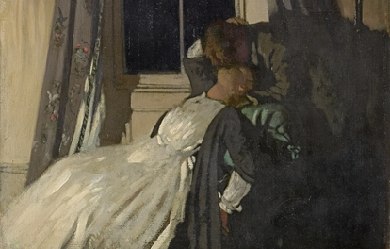
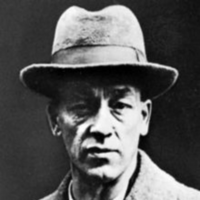
James Stephens (9 February 1880– 26 December 1950) was an Irish novelist and poet. He produced many retellings of Irish myths and fairy tales. His retellings are marked by a rare combination of humour and lyricism (Deirdre, and Irish Fairy Tales are often especially praised). He also wrote several original novels (The Crock of Gold, Etched in Moonlight, Demi-Gods) based loosely on Irish fairy tales. The Crock of Gold in particular has achieved enduring popularity and has often been reprinted.
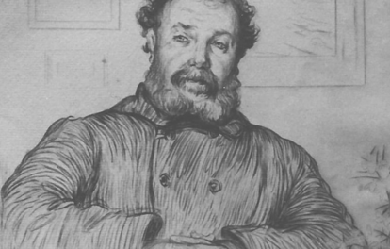
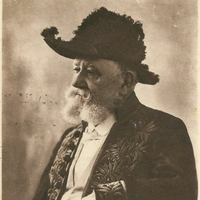
Charles Le Goffic, né le 14 juillet 1863 à Lannion où il est mort le 12 février 1932, est un poète, romancier et critique littéraire français dont l’œuvre célèbre la Bretagne. Biographie Charles-Henri Francis Jean-Marie Le Goffic est le fils de Marie-Aimée Alexandrine Le Tulle, dite Manon, et d’un libraire-imprimeur de Lannion, Jean-François Le Goffic, qui mourut l’année suivant sa naissance. Alors que sa mère ne tire que peu de ressources de l’entreprise, le petit Charles passe ses étés avec sa nourrice, soit à Ploumanac’h, soit à Trégastel. En octobre 1888, il épouse Julie Fleury. À la faveur d’une adjudication, il achète peu après une petite ferme à Rûn-Rouz en Trégastel. Son roman Morgane, la sirène a pour cadre cette ferme de Rûn-Rouz. Agrégé de littérature en 1887, il est enseignant successivement à Gap, Évreux, Nevers et au Havre. En 1886, il fonde avec Maurice Barrès et Raymond de La Tailhède la revue littéraire Les Chroniques. Proche de Charles Maurras, il collabore à la Revue d’Action française (1899), qui deviendra L’Action française (1908), ainsi qu’à la Revue critique des idées et des livres. Bien que républicain convaincu, son régionalisme militant et ses idéaux traditionalistes lui font appuyer le projet maurrassien de restauration monarchique comme en témoigne sa lettre publiée dans L’Enquête sur la monarchie (1900) du chef de file de l’Action française. Il prend la vice-présidence de l’Union régionaliste bretonne, créée en 1898, et lui sert de relais parisien en suscitant la parution d’articles dans la presse.Parlant parfaitement le breton, il ne voulait pas l’utiliser à l’écrit de peur « de se montrer inférieur à sa réputation ». Il est barde d’honneur de la Gorsedd de Bretagne sous le nom d’Eostik ar Garante (Le Rossignol de l’Amour). Le Goffic est élu membre de l’Académie française en 1930 au 12e fauteuil. En 1895, il a introduit en Bretagne la Great Highland Bagpipe (grande cornemuse écossaise) devenue le « biniou bras » à côté du biniou kozh des anciens. Il est inhumé dans l’enclos de l’église du bourg de Trégastel avec sa femme Julie et sa fille Hervine-Marie, morte à l’âge de 17 ans des suites d’un accident de battage survenu à Trégastel. Un monument surmonté de son buste en bronze par Jean Boucher a été érigé par souscription nationale à Lannion. En 1934, un médaillon à son effigie a été apposée sur la Roche des Poètes (Roche des Martyrs) à La Clarté. À l’occasion du 150e anniversaire de sa naissance, un médaillon, œuvre du sculpteur Michel Sprogis, est posé sur un rocher près de la chapelle Sainte-Anne. Œuvres * Nous autres (1879) * Velléda, sous le pseudonyme de Jean Capekerne, (Morlaix, 1882), * Les Mémoires de Saint-Simon, avec Jules Tellier (Paris, 1888) * Amour breton, poésie (Lemerre, 1889) * Les Romanciers d’aujourd’hui (1890) * Nouveau traité de versification française, en collaboration avec Édouard Thieulin (1890) * Chansons bretonnes (1891) * Le Crucifié de Keraliès (1892), ouvrage couronné par l’Académie française. Réédition Ed. des Régionalismes (ISBN 9782824000404).—Avec des bois de Géo-Fourrier (ISBN 9782824004877). * A travers Le Havre, effets de soir et de nuit, en collaboration avec Daniel de Vénancourt, 12 eaux-fortes de Gaston Prunier, Lemale éditeur, 1892. * Passé l’amour (1894) * Contes de l’Assomption (1895) * Quatre jours à l’île de Sein (1896) * Sur la côte (1896), ouvrage couronné par l’Académie française. Réédition Ed. des Régionalismes (ISBN 9782846187695). * Gens de mer (1897) * La Payse (1897). Réédition Ed. des Régionalismes (ISBN 9782824000046). * Morgane la sirène (1898) * Les Phares (1899) * Le Bois dormant, poésie (1900) * Le Mouvement panceltique (1900) * Le Pardon de la reine Anne, poésie (1901) * L’Âme bretonne (4 vol., 1902-1922). Réédition en 4 volumes, Ed. des Régionalismes. * Deux tableaux de la vie terreneuvienne (1903) * Les Métiers pittoresques (1903) * L’Erreur de Florence (1903) * Les Sept-Iles (1904) * Les Calvaires bretons (1904) * Les Bonnets rouges (1906). Réédition Ed. des Régionalismes (ISBN 9782824001500). * La Cigarière (1907) * La Crise sardinière (1907) * Passions celtes (1909). Réédition Ed. des Régionalismes (ISBN 9782824000008). * La double confession (1909) * La littérature française au XIXe siècle (1909) * Ventôse. Le pays (1910) * Fêtes et coutumes populaires, les fêtes patronales, le réveillon, les masques et travestis, le joli mois de mai, les noces en Bretagne, la fête des morts, les feux de la Saint-Jean, danses et musiques populaires, Armand Colin éditeur, Paris 1911. * Tristan Corbière (1911)—Préface au recueil Les Amours jaunes * Racine (2 vol., 1912) * Le Pirate de l’île Lern (1913). Réédition Ed. des Régionalismes (ISBN 9782824000053). * Monsieur Ernest Renan dans la Basse-Bretagne (1913) * Poésies complètes (1913) * Dixmude, un chapitre de l’histoire des fusiliers marins (1915), qui reçut le prix Lasserre en 1915 * Bourguignottes et pompons rouges (1916) * Les Marais de Saint-Gond (1917) * Steenstraëte, un deuxième chapitre de l’histoire des fusiliers marins (1917) * Sans nouvelles (1917) * La Guerre qui passe (1918) * Saint-Georges et Nieuport, les derniers chapitres de l’histoire des fusiliers marins (1919) * Les Trois Maréchaux (1919) * Bretagne (1920) * La Littérature française aux XIXe et XXe siècles (1920) * La Marne en feu (1921) * L’Abbesse de Guérande (1921). Réédition Ed. des Régionalismes (ISBN 9782824001876). * Chez les Jean Gouin (1921) * L’Odyssée de Jean Chevanton (1921) * L’Illustre Bobinet (1922). Réédition Ed. des Régionalismes (ISBN 9782824000015). * Croc d’argent (1922) * Poésies complètes (1922) * Le Treizain de la nostalgie et du déchirement. La visite nocturne, poésies (1926) * Madame Ruguellou (1927). Réédition Ed. des Régionalismes (ISBN 9782824000022). * La Tour d’Auvergne (1928) * Contes de l’Armor et de l’Argoat (1928). Réédition Ed. des Régionalismes (ISBN 9782846188951). * Anthologie des poètes de la mer (1929) * Mes Entretiens avec Foch, suivis d’un entretien avec le général Weygand (1929) * De Quelques ombres (1929) * La Chouannerie: Blancs contre Bleus (1790-1800) (1931) * Poésies complètes (2 vol., 1931) * La Rose des sables (1932) * Ombres lyriques et romanesques (1933) Les références Wikipedia – https://fr.wikipedia.org/wiki/Charles_Le_Goffic

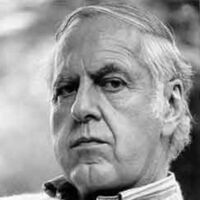
William Meredith was born in New York City on January 9, 1919. He attended the Lenox School in Massachusetts and in 1940 graduated from Princeton University with an A.B. in English, Magna Cum Laude. His senior thesis was on the work of Robert Frost, a major influence for Meredith throughout his career. He worked briefly as a reporter for The New York Times before joining the U.S. Army Air Force in 1941. In 1942 he served as a carrier pilot for the U.S. Navy, achieving the rank of lieutenant. During his service, Meredith's first book of poems, Love Letter from an Impossible Land (1944), was chosen by Archibald MacLeish for the Yale Series of Younger Poets. For the next few years he taught English at Princeton University as Woodrow Wilson Fellow in Writing and Resident Fellow in Creative Writing while still in the U.S. Navy Reserves. Won the Pulitzer Prize for poetry.
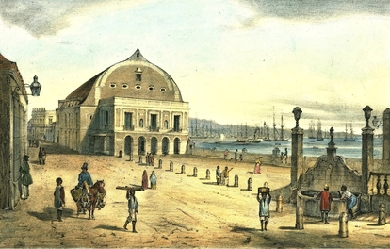
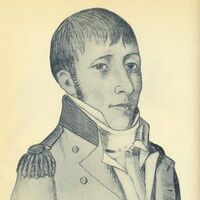
Manuel de Zequeira y Arango (1764-1846). Periodista, poeta, funcionario público y militar cubano. Escribió en numerosas publicaciones de la prensa colonial cubana y marcó pautas a la creación literaria con un incipiente sello criollo. Nació el 28 de agosto de 1764 en La Habana, en el seno de una familia noble y acomodada. Hizo estudios elementales en su hogar, y en 1774 ingresó en el Seminario de San Carlos, donde cursó historia y literatura. Allí estudió junto a Félix Varela, con quien estrechó lazos de amistad. El 18 de agosto de 1784 ingresó como cadete en el Regimiento de Infantería de Soria, lo que marcaría el inicio de su larga carrera militar. Formó parte de los primeros colaboradores del Papel Periódico de La Havana, en el cual publicó poemas y ensayos literarios desde 1792. En 1800 fue nombrado redactor del periódico, lo cual le costó una polémica de dos años con Buenaventura Pascual Ferrer, quien optaba por el mismo cargo. En ese mismo año Zequeira comenzó a dirigir la mencionada publicación, en la que, bajo su dirección, preponderó él el carácter literario. En 1805 cesaron sus funciones de director; sin embargo, prosiguió a modo de colaborador en el mismo Papel Periódico, El Aviso y El Aviso de la Havana. En 1804 fundó El Criticón de La Habana, el cual se destacó por sus numerosos artículos de costumbres y crítica social. Al parecer, Zequeira redactaba completamente los números de El Criticón de La Habana, en el cual potenció una literatura de objetivos morales y sociales muy definidos. Asimismo, escribió para casi todas la publicaciones periódicas de su época, como El Mensajero político económico y literario de La Havana, El Noticioso Mercantil, El Hablador, El Observador Habanero y La Lira de Apolo. Zequeira opinaba que los periódicos debían mostrar la «bella literatura», pero la física, la química y la medicina no debían tener cabida en ese tipo de impresos. Las ciencias, abogaba, debían explicarse en las universidades y escuelas. También trabajó en la Imprenta de la Capitanía General. Zequeira figura entre las voces líricas más destacadas del período colonial cubano. Fue poeta neoclásico que en sus versos destacaba un incipiente “criollismo” -nombre que se daba a las primeras muestras identitarias de la cubanidad. Su poema A la Piña muestra claramente este carácter. Se destacó además como prosista interesado en comunicarse con sus lectores y en dejar huella impresa de la vida habanera en elementos del costumbrismo y el testimonio. Introdujo la prosa poética en la Isla, al publicar en el Papel Periódico de La Havana el artículo «El relox de la Havana». Fue un excelente sonetista, considerado el primer poeta cubano, si no cronológicamente, sí por su vocación sostenida, alto simbolismo con desarrollo de motivos identitarios criollos, conocimiento cabal del instrumento poético y facilidades líricas. Muy vinculado al gobierno de don Luis de las Casas y a la labor de la Sociedad Económica de Amigos del País (SEAP) de La Habana, en 1809 desempeñó el cargo de vicecensor de su Junta Directiva. Fue promotor del pensamiento del reformismo en Cuba. Su talento militar siempre estuvo al servicio de la monarquía hispánica. En julio de 1793, durante la contienda contra la invasión francesa, partió en una expedición de apoyo a la guarnición del Cuartel de Cahobas, en la isla de Santo Domingo. Participó en los combates de la Matric y Yacsí; este último inspiró uno de sus cantos heroicos, Ataque de Yacsí. Obtuvo el grado de subteniente de granaderos, y en 1796 volvió a La Habana, donde contrajo matrimonio. Por el mérito de sus servicios, en 1810 fue nombrado comandante en jefe de la Plaza de Caro, en Venezuela, pero nunca llegó a tomar posesión de su cargo. En 1813 se le destinó al Nuevo Reino de Granada, actual Colombia, a las órdenes del general Francisco Montaleno y Ambuladi. En tierras neogranadinas combatió a los independentistas. Fue gobernador militar y civil de la provincia de Río Hacha de 1814 a 1815. En ese último año se le destinó a Mompox, y en 1816 fue nombrado teniente-rey y presidente de la Junta de Real Hacienda de Cartagena. A finales de 1817 retornó a La Habana, con Real Licencia y grado de coronel de infantería. En 1821 fue trasladado a Matanzas en calidad de coronel de las milicias de esa ciudad. Durante su estancia en territorio matancero se presentaron los primeros síntomas de su locura. A partir de entonces, su vida pública y literaria cesó. Falleció en La Habana el 18 de abril de 1846. Empleó múltiples seudónimos, como Ismael Raquenue, Ezequiel Armuna, Ezequiel Amura, Anselmo Erquea Gravina, Raquel Yum Zenea, El Observador de La Havana, El bruxo de La Havana, El Marqués Nueya, Arnefio Garaique, El Licenciado Frisesomorum, La horma de su zapato, Armenau Queizel, El Criticón de La Havana, Arefique, Enrique Aluzema. Se cree que Leofar Lemonieau, D. Amosar, Yeso de Jarzos, Eguzqui y Matato, sean anagramas de su nombre. Por razón de tan frecuentes enmascaramientos, parte de su obra permanece sin localizar. Referencias En Caribe – encaribe.org/index.php?option=com_content&view=article&id=653:manuel-de-zequeira&catid=87:literatura&Itemid=104

Mis nombres son Jael Alexandra, empecé a escribir desde que tenía 13 años. Desde ese momento comencé a entender mejor mis sentimientos y me di cuenta de que vivía y sentía cada sentimiento al triple de su capacidad. Esto de escribir poemas empezó en mi vida como un juego, me alegro de que aquel juego haya llegado tan lejos para mí porque a lo largo de los años he mejorado en cada escrito, he madurado con cada etapa de mi vida y mis palabras son mucho más consistentes que antes. Al momento de escribir me encanta que los sentimientos naveguen cual personas, que tengan también un corazón como cualquiera de nosotros. La sinceridad es el punto clave para llegar al alma del lector junto al dramatismo del sufrimiento real. Confieso que a pesar de que sea un tanto "malo" vivir cada sentimiento con demasiada intensidad, me encanta porque así puedo sentir que mi alma, mis, momentos y mi vida quedan plasmadas en palabras que cualquiera no puede entender sino lo ha vivido. He pasado como cualquier persona por muchos malos y buenos momentos, han habido personas que han estado en aquellos sucesos pero puedo decir que en el pasado no fueron fuentes de inspiración; simplemente, me basaba en lo que yo sentía. Hoy puedo decir que mi vida en el presente cambió de rumbo en torno a lo que escribo ya que mi mayor fuente de inspiración tiene nombres y apellidos y no saben lo difícil que se me hace darme cuenta de que ya no está a mi lado, de que cada día nos alejamos pero que a pesar de eso mis pensamientos y mi corazón lo traen junto a mí cada vez que le escribo.
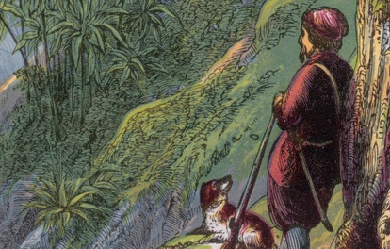
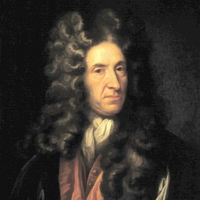
Daniel Defoe (c. 1660 – 24 April 1731), born Daniel Foe, was an English trader, writer, journalist, pamphleteer and spy. He is most famous for his novel Robinson Crusoe, which is second only to the Bible in its number of translations. He has been seen as one of the earliest proponents of the English novel, and helped to popularise the form in Britain with others such as Aphra Behn and Samuel Richardson. Defoe wrote many political tracts and often was in trouble with the authorities, including a spell in prison. Intellectuals and political leaders paid attention to his fresh ideas and sometimes consulted with him. Defoe was a prolific and versatile writer, producing more than three hundred works—books, pamphlets, and journals—on diverse topics, including politics, crime, religion, marriage, psychology, and the supernatural. He was also a pioneer of business journalism and economic journalism. Early life Daniel Foe (his original name) was probably born in Fore Street in the parish of St Giles Cripplegate, London. Defoe later added the aristocratic-sounding “De” to his name, and on occasion claimed descent from the family of De Beau Faux. His birthdate and birthplace are uncertain, and sources offer dates from 1659 to 1662, with the summer or early autumn of 1660 considered the most likely. His father, James Foe, was a prosperous tallow chandler and a member of the Worshipful Company of Butchers. In Defoe’s early life, he experienced some of the most unusual occurrences in English history: in 1665, 70,000 were killed by the Great Plague of London, and the next year, the Great Fire of London left standing only Defoe’s and two other houses in his neighbourhood. In 1667, when he was probably about seven, a Dutch fleet sailed up the Medway via the River Thames and attacked the town of Chatham in the raid on the Medway. His mother, Annie, had died by the time he was about ten. Education Defoe was educated at the Rev. James Fisher’s boarding school in Pixham Lane in Dorking, Surrey. His parents were Presbyterian dissenters, and around the age of 14, he attended a dissenting academy at Newington Green in London run by Charles Morton, and he is believed to have attended the Newington Green Unitarian Church and kept practising his Presbyterian religion. During this period, the English government persecuted those who chose to worship outside the Church of England. Business career Defoe entered the world of business as a general merchant, dealing at different times in hosiery, general woollen goods, and wine. His ambitions were great and he was able to buy a country estate and a ship (as well as civets to make perfume), though he was rarely out of debt. He was forced to declare bankruptcy in 1692. On 1 January 1684, Defoe married Mary Tuffley at St Botolph’s Aldgate. She was the daughter of a London merchant, receiving a dowry of £3,700—a huge amount by the standards of the day. With his debts and political difficulties, the marriage may have been troubled, but it lasted 47 years and produced eight children.In 1685, Defoe joined the ill-fated Monmouth Rebellion but gained a pardon, by which he escaped the Bloody Assizes of Judge George Jeffreys. Queen Mary and her husband William III were jointly crowned in 1689, and Defoe became one of William’s close allies and a secret agent. Some of the new policies led to conflict with France, thus damaging prosperous trade relationships for Defoe, who had established himself as a merchant. In 1692, Defoe was arrested for debts of £700, though his total debts may have amounted to £17,000. His laments were loud and he always defended unfortunate debtors, but there is evidence that his financial dealings were not always honest. He died with little wealth and evidence of lawsuits with the royal treasury.Following his release, he probably travelled in Europe and Scotland, and it may have been at this time that he traded wine to Cadiz, Porto and Lisbon. By 1695, he was back in England, now formally using the name “Defoe” and serving as a “commissioner of the glass duty”, responsible for collecting taxes on bottles. In 1696, he ran a tile and brick factory in what is now Tilbury in Essex and lived in the parish of Chadwell St Mary. Writing As many as 545 titles have been ascribed to Defoe, ranging from satirical poems, political and religious pamphlets, and volumes. (Furbank and Owens argue for the much smaller number of 276 published items in Critical Bibliography (1998).) Pamphleteering and prison Defoe’s first notable publication was An essay upon projects, a series of proposals for social and economic improvement, published in 1697. From 1697 to 1698, he defended the right of King William III to a standing army during disarmament, after the Treaty of Ryswick (1697) had ended the Nine Years’ War (1688–1697). His most successful poem, The True-Born Englishman (1701), defended the king against the perceived xenophobia of his enemies, satirising the English claim to racial purity. In 1701, Defoe presented the Legion’s Memorial to Robert Harley, then Speaker of the House of Commons—and his subsequent employer—while flanked by a guard of sixteen gentlemen of quality. It demanded the release of the Kentish petitioners, who had asked Parliament to support the king in an imminent war against France. The death of William III in 1702 once again created a political upheaval, as the king was replaced by Queen Anne who immediately began her offensive against Nonconformists. Defoe was a natural target, and his pamphleteering and political activities resulted in his arrest and placement in a pillory on 31 July 1703, principally on account of his December 1702 pamphlet entitled The Shortest-Way with the Dissenters; Or, Proposals for the Establishment of the Church, purporting to argue for their extermination. In it, he ruthlessly satirised both the High church Tories and those Dissenters who hypocritically practised so-called “occasional conformity”, such as his Stoke Newington neighbour Sir Thomas Abney. It was published anonymously, but the true authorship was quickly discovered and Defoe was arrested. He was charged with seditious libel. Defoe was found guilty after a trial at the Old Bailey in front of the notoriously sadistic judge Salathiel Lovell. Lovell sentenced him to a punitive fine of 200 marks, to public humiliation in a pillory, and to an indeterminate length of imprisonment which would only end upon the discharge of the punitive fine. According to legend, the publication of his poem Hymn to the Pillory caused his audience at the pillory to throw flowers instead of the customary harmful and noxious objects and to drink to his health. The truth of this story is questioned by most scholars, although John Robert Moore later said that “no man in England but Defoe ever stood in the pillory and later rose to eminence among his fellow men”. After his three days in the pillory, Defoe went into Newgate Prison. Robert Harley, 1st Earl of Oxford and Earl Mortimer, brokered his release in exchange for Defoe’s co-operation as an intelligence agent for the Tories. In exchange for such co-operation with the rival political side, Harley paid some of Defoe’s outstanding debts, improving his financial situation considerably.Within a week of his release from prison, Defoe witnessed the Great Storm of 1703, which raged through the night of 26/27 November. It caused severe damage to London and Bristol, uprooted millions of trees, and killed more than 8,000 people, mostly at sea. The event became the subject of Defoe’s The Storm (1704), which includes a collection of witness accounts of the tempest. Many regard it as one of the world’s first examples of modern journalism.In the same year, he set up his periodical A Review of the Affairs of France which supported the Harley Ministry, chronicling the events of the War of the Spanish Succession (1702–1714). The Review ran three times a week without interruption until 1713. Defoe was amazed that a man as gifted as Harley left vital state papers lying in the open, and warned that he was almost inviting an unscrupulous clerk to commit treason; his warnings were fully justified by the William Gregg affair. When Harley was ousted from the ministry in 1708, Defoe continued writing the Review to support Godolphin, then again to support Harley and the Tories in the Tory ministry of 1710–1714. The Tories fell from power with the death of Queen Anne, but Defoe continued doing intelligence work for the Whig government, writing “Tory” pamphlets that undermined the Tory point of view.Not all of Defoe’s pamphlet writing was political. One pamphlet was originally published anonymously, entitled "A True Relation of the Apparition of One Mrs. Veal the Next Day after her Death to One Mrs. Bargrave at Canterbury the 8th of September, 1705." It deals with interaction between the spiritual realm and the physical realm and was most likely written in support of Charles Drelincourt’s The Christian Defense against the Fears of Death (1651). It describes Mrs. Bargrave’s encounter with her old friend Mrs. Veal after she had died. It is clear from this piece and other writings that the political portion of Defoe’s life was by no means his only focus. Anglo-Scottish Union of 1707 In despair during his imprisonment for the seditious libel case, Defoe wrote to William Paterson, the London Scot and founder of the Bank of England and part instigator of the Darien scheme, who was in the confidence of Robert Harley, 1st Earl of Oxford and Earl Mortimer, leading minister and spymaster in the English Government. Harley accepted Defoe’s services and released him in 1703. He immediately published The Review, which appeared weekly, then three times a week, written mostly by himself. This was the main mouthpiece of the English Government promoting the Act of Union 1707.In 1709, Defoe authored a rather lengthy book entitled The History of the Union of Great Britain, an Edinburgh publication printed by the Heirs of Anderson. The book was not published anonymously and cites Defoe twice as being its author. The book attempts to explain the facts leading up to the Act of Union 1707, dating all the way back to 6 December 1604 when King James I was presented with a proposal for unification. This so-called “first draft” for unification took place 100 years before the signing of the 1707 accord, which respectively preceded the commencement of Robinson Crusoe by another ten years. Defoe began his campaign in The Review and other pamphlets aimed at English opinion, claiming that it would end the threat from the north, gaining for the Treasury an “inexhaustible treasury of men”, a valuable new market increasing the power of England. By September 1706, Harley ordered Defoe to Edinburgh as a secret agent to do everything possible to help secure acquiescence in the Treaty of Union. He was conscious of the risk to himself. Thanks to books such as The Letters of Daniel Defoe (edited by G. H. Healey, Oxford 1955), far more is known about his activities than is usual with such agents. His first reports included vivid descriptions of violent demonstrations against the Union. “A Scots rabble is the worst of its kind”, he reported. Years later John Clerk of Penicuik, a leading Unionist, wrote in his memoirs that it was not known at the time that Defoe had been sent by Godolphin: … to give a faithful account to him from time to time how everything past here. He was therefor a spy among us, but not known to be such, otherways the Mob of Edin. had pull him to pieces. Defoe was a Presbyterian who had suffered in England for his convictions, and as such he was accepted as an adviser to the General Assembly of the Church of Scotland and committees of the Parliament of Scotland. He told Harley that he was “privy to all their folly” but “Perfectly unsuspected as with corresponding with anybody in England”. He was then able to influence the proposals that were put to Parliament and reported, Having had the honour to be always sent for the committee to whom these amendments were referrèd, I have had the good fortune to break their measures in two particulars via the bounty on Corn andproportion of the Excise. For Scotland, he used different arguments, even the opposite of those which he used in England, usually ignoring the English doctrine of the Sovereignty of Parliament, for example, telling the Scots that they could have complete confidence in the guarantees in the Treaty. Some of his pamphlets were purported to be written by Scots, misleading even reputable historians into quoting them as evidence of Scottish opinion of the time. The same is true of a massive history of the Union which Defoe published in 1709 and which some historians still treat as a valuable contemporary source for their own works. Defoe took pains to give his history an air of objectivity by giving some space to arguments against the Union but always having the last word for himself. He disposed of the main Union opponent, Andrew Fletcher of Saltoun, by ignoring him. Nor does he account for the deviousness of the Duke of Hamilton, the official leader of the various factions opposed to the Union, who seemingly betrayed his former colleagues when he switched to the Unionist/Government side in the decisive final stages of the debate. Defoe made no attempt to explain why the same Parliament of Scotland which was so vehement for its independence from 1703 to 1705 became so supine in 1706. He received very little reward from his paymasters and of course no recognition for his services by the government. He made use of his Scottish experience to write his Tour thro’ the whole Island of Great Britain, published in 1726, where he admitted that the increase of trade and population in Scotland which he had predicted as a consequence of the Union was “not the case, but rather the contrary”. Defoe’s description of Glasgow (Glaschu) as a “Dear Green Place” has often been misquoted as a Gaelic translation for the town’s name. The Gaelic Glas could mean grey or green, while chu means dog or hollow. Glaschu probably means “Green Hollow”. The “Dear Green Place”, like much of Scotland, was a hotbed of unrest against the Union. The local Tron minister urged his congregation “to up and anent for the City of God”. The “Dear Green Place” and “City of God” required government troops to put down the rioters tearing up copies of the Treaty at almost every mercat cross in Scotland. When Defoe visited in the mid-1720s, he claimed that the hostility towards his party was “because they were English and because of the Union, which they were almost universally exclaimed against”. Late writing The extent and particulars are widely contested concerning Defoe’s writing in the period from the Tory fall in 1714 to the publication of Robinson Crusoe in 1719. Defoe comments on the tendency to attribute tracts of uncertain authorship to him in his apologia Appeal to Honour and Justice (1715), a defence of his part in Harley’s Tory ministry (1710–1174). Other works that anticipate his novelistic career include The Family Instructor (1715), a conduct manual on religious duty; Minutes of the Negotiations of Monsr. Mesnager (1717), in which he impersonates Nicolas Mesnager, the French plenipotentiary who negotiated the Treaty of Utrecht (1713); and A Continuation of the Letters Writ by a Turkish Spy (1718), a satire of European politics and religion, ostensibly written by a Muslim in Paris. From 1719 to 1724, Defoe published the novels for which he is famous (see below). In the final decade of his life, he also wrote conduct manuals, including Religious Courtship (1722), The Complete English Tradesman (1726) and The New Family Instructor (1727). He published a number of books decrying the breakdown of the social order, such as The Great Law of Subordination Considered (1724) and Everybody’s Business is Nobody’s Business (1725) and works on the supernatural, like The Political History of the Devil (1726), A System of Magick (1727) and An Essay on the History and Reality of Apparitions (1727). His works on foreign travel and trade include A General History of Discoveries and Improvements (1727) and Atlas Maritimus and Commercialis (1728). Perhaps his greatest achievement with the novels is the magisterial A tour thro’ the whole island of Great Britain (1724–1727), which provided a panoramic survey of British trade on the eve of the Industrial Revolution. The Complete English Tradesman Published in 1726, The Complete English Tradesman is an example of Defoe’s political works. He discusses the role of the tradesman in England in comparison to tradesmen internationally, arguing that the British system of trade is far superior. He also implies that trade is the backbone of the British economy: “estate’s a pond, but trade’s a spring.” He praises the practicality of trade not only within the economy but the social stratification as well. Most of the British gentry, he argues is at one time or another inextricably linked with the institution of trade, either through personal experience, marriage or genealogy. Oftentimes younger members of noble families entered into trade. Marriage to a tradesman’s daughter by a nobleman was also common. Overall Defoe demonstrated a high respect for tradesmen, being one himself. Not only does Defoe elevate individual British tradesmen to the level of gentleman, but he praises the entirety of British trade as a superior system. Trade, Defoe argues is a much better catalyst for social and economic change than war. He states that through imperialism and trade expansion the British empire is able to “increase commerce at home” through job creation and increased consumption. He states that increased consumption, by laws of supply and demand, increases production and in turn raises wages for the poor therefore lifting part of British society further out of poverty. Novels Robinson Crusoe Published in his late fifties, this novel relates the story of a man’s shipwreck on a desert island for twenty-eight years and his subsequent adventures. Throughout its episodic narrative, Crusoe’s struggles with faith are apparent as he bargains with God in times of life-threatening crises, but time and again he turns his back after his deliverances. He is finally content with his lot in life, separated from society, following a more genuine conversion experience. Usually read as fiction, a coincidence of background geography suggests that this may be non-fiction. In the opening pages of The Farther Adventures of Robinson Crusoe, the author describes how Crusoe settled in Bedford, married and produced a family, and that when his wife died, he went off on these further adventures. Bedford is also the place where the brother of “H. F.” in A Journal of the Plague Year retired to avoid the danger of the plague, so that by implication, if these works were not fiction, Defoe’s family met Crusoe in Bedford, from whence the information in these books was gathered. Defoe went to school in Stoke Newington, London, with a friend named Caruso. The novel has been assumed to be based in part on the story of the Scottish castaway Alexander Selkirk, who spent four years stranded in the Juan Fernández Islands, but this experience is inconsistent with the details of the narrative. The island Selkirk lived on was named Más a Tierra (Closer to Land) at the time and was renamed Robinson Crusoe Island in 1966. It has been supposed that Defoe may have also been inspired by the Latin or English translation of a book by the Andalusian-Arab Muslim polymath Ibn Tufail, who was known as “Abubacer” in Europe. The Latin edition of the book was entitled Philosophus Autodidactus and it was an earlier novel that is also set on a deserted island. Captain Singleton Defoe’s next novel was Captain Singleton (1720), an adventure story whose first half covers a traversal of Africa and whose second half taps into the contemporary fascination with piracy. It has been commended for its sensitive depiction of the close relationship between the hero and his religious mentor, Quaker William Walters. Memoirs of a Cavalier Memoirs of a Cavalier (1720) is set during the Thirty Years’ War and the English Civil War. A Journal of the Plague Year A novel often read as non-fiction, this is an account of the Great Plague of London in 1665. It is undersigned by the initials “H. F.”, suggesting the author’s uncle Henry Foe as its primary source. It is an historical account of the events based on extensive research, published in 1722. Bring out your dead! The ceaseless chant of doom echoed through a city of emptied streets and filled grave pits. For this was London in the year of 1665, the Year of the Great Plague … In 1721, when the Black Death again threatened the European Continent, Daniel Defoe wrote “A Journal of the Plague Year” to alert an indifferent populace to the horror that was almost upon them. Through the eyes of a saddler who had chosen to remain while multitudes fled, the master realist vividly depicted a plague-stricken city. He re-enacted the terror of a helpless people caught in a tragedy they could not comprehend: the weak preying on the dying, the strong administering to the sick, the sinful orgies of the cynical, the quiet faith of the pious. With dramatic insight he captured for all time the death throes of a great city.—Back cover of the New American Library version of “A Journal of the Plague Year”; Signet Classic, 1960 Colonel Jack Colonel Jack (1722) follows an orphaned boy from a life of poverty and crime to colonial prosperity, military and marital imbroglios, and religious conversion, driven by a problematic notion of becoming a “gentleman.” Moll Flanders Also in 1722, Defoe wrote Moll Flanders, another first-person picaresque novel of the fall and eventual redemption, both material and spiritual, of a lone woman in 17th-century England. The titular heroine appears as a whore, bigamist, and thief, lives in The Mint, commits adultery and incest, and yet manages to retain the reader’s sympathy. Her savvy manipulation of both men and wealth earns her a life of trials but ultimately an ending in reward. Although Moll struggles with the morality of some of her actions and decisions, religion seems to be far from her concerns throughout most of her story. However, like Robinson Crusoe, she finally repents. Moll Flanders is an important work in the development of the novel, as it challenged the common perception of femininity and gender roles in 18th-century British society, and it has come to be widely regarded as an example of erotica. Roxana Moll Flanders and Defoe’s final novel, Roxana: The Fortunate Mistress (1724), are examples of the remarkable way in which Defoe seems to inhabit his fictional characters (yet “drawn from life”), not least in that they are women. Roxana narrates the moral and spiritual decline of a high society courtesan. Roxana differs from other Defoe works because the main character does not exhibit a conversion experience, even though she claims to be a penitent later in her life, at the time that she’s relaying her story. Death Daniel Defoe died on 24 April 1731, probably while in hiding from his creditors. He often was in debtors’ prison. The cause of his death was labelled as lethargy, but he probably experienced a stroke. He was interred in Bunhill Fields (today Bunhill Fields Burial and Gardens), Borough of Islington, London, where a monument was erected to his memory in 1870.Defoe is known to have used at least 198 pen names. Selected works Novels * The Consolidator, or Memoirs of Sundry Transactions from the World in the Moon: Translated from the Lunar Language (1705) * Robinson Crusoe (1719) – originally published in two volumes:The Life and Strange Surprizing Adventures of Robinson Crusoe, of York, Mariner: Who Lived Eight and Twenty Years [...] * The Farther Adventures of Robinson Crusoe: Being the Second and Last Part of His Life [...] * Serious Reflections During the Life and Surprising Adventures of Robinson Crusoe: With his Vision of the Angelick World (1720) * Captain Singleton (1720) * Memoirs of a Cavalier (1720) * A Journal of the Plague Year (1722) * Colonel Jack (1722) * Moll Flanders (1722) * Roxana: The Fortunate Mistress (1724) Non-fiction * An Essay Upon Projects (1697) – which includes a chapter suggesting a national insurance scheme. * The Storm (1704) – describes the worst storm ever to hit Britain in recorded times. Includes eyewitness accounts. * Atlantis Major (1711) * The Family Instructor (1715) * Memoirs of the Church of Scotland (1717) * The History of the Remarkable Life of John Sheppard (1724) – describing Sheppard’s life of crime and concluding with the miraculous escapes from prison for which he had become a public sensation. * A Narrative of All The Robberies, Escapes, &c. of John Sheppard (1724) – written by or taken from Sheppard himself in the condemned cell before he was hanged for theft, apparently by way of conclusion to the Defoe work. * A tour thro’ the whole island of Great Britain, divided into circuits or journies (1724–1727) * The Political History of the Devil (1726) * The Complete English Tradesman (1726) * A treatise concerning the use and abuse of the marriage bed... (1727) * A Plan of the English Commerce (1728) Pamphlets or essays in prose * The Poor Man’s Plea (1698) * The History of the Kentish Petition (1701) * The Shortest Way with the Dissenters (1702) * The Great Law of Subordination Consider’d (1704) * Giving Alms No Charity, and Employing the Poor (1704) * An Appeal to Honour and Justice, Tho’ it be of his Worst Enemies, by Daniel Defoe, Being a True Account of His Conduct in Publick Affairs (1715) * A Vindication of the Press: Or, An Essay on the Usefulness of Writing, on Criticism, and the Qualification of Authors (1718) * Every-body’s Business, Is No-body’s Business (1725) * The Protestant Monastery (1726) * Parochial Tyranny (1727) * Augusta Triumphans (1728) * Second Thoughts are Best (1729) * An Essay Upon Literature (1726) * Mere Nature Delineated (1726) * Conjugal Lewdness (1727) Pamphlets or essays in verse * The True-Born Englishman: A Satyr (1701) * Hymn to the Pillory (1703) * An Essay on the Late Storm (1704) Some contested works attributed to Defoe * A Friendly Epistle by way of reproof from one of the people called Quakers, to T. B., a dealer in many words (1715). * The King of Pirates (1719) – purporting to be an account of the pirate Henry Avery. * The Pirate Gow (1725) – an account of John Gow. * A General History of the Pyrates (1724, 1725, 1726, 1828) – published in two volumes by Charles Rivington, who had a shop near St. Paul’s Cathedral, London. Published under the name of Captain Charles Johnson, it sold in many editions. * Captain Carleton’s Memoirs of an English Officer (1728). * The life and adventures of Mrs. Christian Davies, commonly call’d Mother Ross (1740) – published anonymously; printed and sold by R. Montagu in London; and attributed to Defoe but more recently not accepted. References Wikipedia—https://en.wikipedia.org/wiki/Daniel_Defoe

Originaria de la hermosa CD. Juarez Chiapas, recidente actual de la CD. de Villahermosa Tab.,la mas pequeña de 6 hermanos,egresada de la carrera de Lic. en Biología, amante de las canciones románticas y llegadoras, no me gusta la Banda , amo nadar, leer, montar a caballo pero mi Hobby es escribir,me inspiro en las personas que me rodean y a las que amo...Me considero una mujer con grandes cualidades, amo estar en familia y adoro salir con mis amigos...
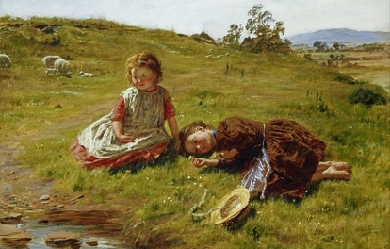
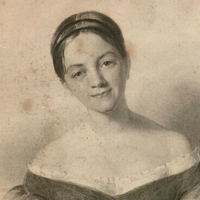
Letitia Elizabeth Landon (14 August 1802– 15 October 1838), English poet and novelist, better known by her initials L. E. L. Early life Letitia Elizabeth Landon was born on 14 August 1802 in Chelsea, London to John Landon and Catherine Jane, née Bishop. A precocious child, Landon learned to read as a toddler; an invalid neighbour would scatter letter tiles on the floor and reward young Letitia for reading, and, according to her father, “she used to bring home many rewards.” At the age of five, Landon began attending Mrs Rowden’s school at 22 Hans Place, which counted among its alumnae Mary Russell Mitford and Lady Caroline Lamb. The family moved to the country in 1809, so that John Landon could carry out a model farm project, and Landon was educated at home by her cousin Elizabeth from that point on. Elizabeth, though older, soon found her knowledge and abilities outstripped by those of her pupil: “When I asked Letitia any question relating either to history, geography, grammar - Plutarch’s Lives, or to any book we had been reading, I was pretty certain her answers would be perfectly correct; still, not exactly recollecting, and unwilling she should find out just then that I was less learned than herself, I used thus to question her: ‘Are you quite certain?’... I never knew her to be wrong.” When young, Letitia was very close to her younger brother, Whittington Henry, born 1804. Paying for Whittington through university (Worcester Colloege, Oxford) was one of the needs that drove Letitia to publish. She also supported his preferment and later dedicated her poem ‘Captain Cook’ to their childhood days together. Whittington went on to become a minister and published a book of Sermons in 1835. Sadly, he did not show any appreciation for all his sister’s financial assistance but spread false rumours about her marriage and death. Letitia also had a little sister, Elizabeth Jane (1806), who was a frail child and died in 1819, aged just 13. Little is known of Elizabeth but her death may well have left a profound impression on Letitia and it could be Elizabeth who is referred to in the poem ‘The Forgotten One’. Appearance and character The following statements from those who knew her give some idea of the woman known as L. E. L. Emma Roberts, from her introduction to “The Zenana and other works”: L.E.L. could not be, strictly speaking, called handsome ; her eyes being the only good feature in a countenance, which was, however, so animated, and lighted up with such intellectual expression, as to be exceedingly attractive. Gay and piquant, her clear complexion, dark hair, and eyes, rendered her, when in health and spirits, a sparkling brunette. The prettiness of L.E.L., though generally acknowledged, was not talked about ; and many persons, on their first introduction, were as pleasingly surprised as the Ettrick Shepherd, who, gazing upon her with great admiration, exclaimed “ I did na think ye had been sae bonny.” Her figure was slight, and beautifully proportioned, with little hands and feet ; and these personal advantages, added to her kind and endearing manners, rendered her exceedingly fascinating. William Jerdan, from his autobiography: In truth, she was the most unselfish of human creatures; and it was quite extraordinary to witness her ceaseless consideration for the feelings of others, even in minute trifles, whilst her own mind was probably troubled and oppressed; a sweet disposition, so perfectly amiable, from Nature’s fount, and so unalterable in its manifestations throughout her entire life, that every one who enjoyed her society loved her, and servants, companions, intimates, friends, all united in esteem and affection for the gentle and self-sacrificing being who never exhibited a single trait of egotism, presumption, or unkindliness! Mrs S.C. Hall from The Atlantic Monthly: Perhaps the greatest magic she exercised was, that, after the first rush of remembrance of all that wonderful young woman had written had subsided, she rendered you completely oblivious of what she had done by the irresistible charm of what she was. You forgot all about her books,—you only felt the intense delight of life with her ; she was penetrating and sympathetic, and entered into your feelings so entirely that you wondered how 'the little witch’ could read you so readily and so rightly,—and if, now and then, you were startled, perhaps dismayed, by her wit, it was but the prick of a diamond arrow. Words and thoughts that she flung hither and thither, without design or intent beyond the amusement of the moment, come to me still with a mingled thrill of pleasure and pain that I cannot describe, and that my most friendly readers, not having known her, could not understand. Mrs A.K.C. Elwood from her Memoirs of Literary Ladies: It was her invariable habit to write in her bed-room,—"a homely-looking, almost uncomfortable room, fronting the street, and barely furnished—with a simple white bed, at the foot of which was a small, old, oblong-shaped sort of dressing-table, quite covered with a common worn writing-desk, heaped with papers, while some strewed the ground, the table being too small for aught besides the desk. A little high-backed cane chair, which gave you any idea but that of comfort, and a few books scattered about, completed the author’s paraphernalia.” Emma Roberts again: She not only read, but thoroughly understood, and entered into the merits of every book that came out ; while it is merely necessary to refer to her printed works, to calculate the amount of information which she had gathered from preceding authors. The history and literature of all ages and all countries were familiar to her ; nor did she acquire any portion of her knowledge in a superficial manner ; the extent of her learning, and the depth of her research, manifesting themselves in publications which do not bear her name ; her claim to them being only known to friends, who, like myself, had access to her desk, and with whom she knew the secret might be safely trusted. One aspect that is common to all accounts of those who knew Miss Landon is that she possessed an exceptionally high level of intelligence. Fredric Rowton in his 'The Female Poets of Great Britain’ puts it thus: Of Mrs. Maclean’s genius there can be but one opinion. It is distinguished by very great intellectual power, a highly sensitive and ardent imagination, an intense fervour of passionate emotion, and almost unequalled eloquence and fluency. Of mere art she displays but little. Her style is irregular and careless, and her painting sketchy and rough: but there is genius in every line she has written. (Like many others, Rowton is deceived by the artistry of Landon’s projection of herself as the improvisatrice, L. E. L. As Glennis Stevenson writes, few poets have been as artificial as Landon in her 'gushing stream of Song’. She cites the usage of repetition, mirroring and the embedding of texts amongst the techniques that account for the characteristic intensity of Landon’s poetry.) Literary career An agricultural depression soon followed, and the family moved back to London in 1815, where John Landon made the acquaintance of William Jerdan, editor of the Literary Gazette. According to 19th-century commentator Mrs A. T. Thomson, Jerdan took notice of the young Landon when he saw her coming down the street, “trundling a hoop with one hand, and holding in the other a book of poems, of which she was catching a glimpse between the agitating course of her evolutions.” Jerdan encouraged Landon’s poetic endeavors, and her first poem was published under the single initial “L” in the Gazette in 1820, when Landon was 18. The following year, with financial support from her grandmother, Landon published a book of poetry, The Fate of Adelaide, under her full name. The book met with little critical notice but sold well; Landon, however, never received any profits, as the publisher went out of business shortly thereafter. The same month that The Fate of Adelaide appeared, Landon published two poems under the initials “L.E.L.” in Gazette; these poems, and the initials under which they were published, attracted much discussion and speculation. As contemporary critic Laman Blanchard put it, the initials L.E.L. “speedily became a signature of magical interest and curiousity.” Bulwer Lytton wrote that, as a young college student, he and his classmates would rush every Saturday afternoon for the ‘Literary Gazette,’ [with] an impatient anxiety to hasten at once to that corner of the sheet which contained the three magical letters L.E.L. And all of us praised the verse, and all of us guessed at the author. We soon learned it was a female, and our admiration was doubled, and our conjectures tripled.” Landon served as the Gazette’s chief reviewer as she continued to write poetry; her second collection, The Improvisatrice, appeared in 1824. Landon’s father died later that year, and Landon was forced to use her writing to support both herself and her family; Contemporaries saw this profit-motive as detrimental to the quality of Landon’s work. Mary Mitford claimed that the novels of Catherine Stepney were honed and polished by Landon. By 1826, Landon’s high reputation began to suffer as rumours circulated that she had had affairs or secretly borne children. (In 2000, scholar Cynthia Lawford published an article in the London Review of Books citing birth records implying that Landon had in fact borne children in the 1820s from a secret affair with Jerdan.) Details of Letitia’s children by William (Ella, Fred and Laura) and their descendants can be found in Susan Matoff Landon continued, however, to publish poetry, and in 1831 she published her first novel, Romance and Reality. She became engaged to John Forster. Forster became aware of the rumours regarding Landon’s sexual activity, and asked her to refute them. Landon responded that Forster should "make every inquiry in [his] power," which Forster did; after he pronounced himself satisfied of Landon’s purity, however, Landon broke off their engagement. To him, she wrote: The more I think, the more I feel I ought not– I can not– allow you to unite yourself with one accused of - I can not write it. The mere suspicion is dreadful as death. Were it stated as a fact, that might be disproved. Were it a difficulty of any other kind, I might say, Look back at every action of my life, ask every friend I have. But what answer can I give ...? I feel that to give up all idea of a near and dear connection is as much my duty to myself as to you... Privately, however, Landon stated that she would never marry a man who had mistrusted her. In a letter to Bulwer Lytton, she wrote that “if his future protection is to harass and humiliate me as much as his present - God keep me from it... I cannot get over the entire want of delicacy to me which could repeat such slander to myself.” After this, Landon began to "[talk] of marrying any one, and of wishing to get away, from England, and from those who had thus misunderstood her." In October 1836, Landon met George Maclean, governor of the Gold Coast (now Ghana), at a dinner party, and the two began a relationship. Maclean, however, moved to Scotland early the following year, to the surprise and distress of Landon and her friends. After much prodding, Maclean returned to England and he and Landon were married shortly thereafter, on 7 June 1838. The marriage was kept secret, and Landon spent the first month of it living with friends. Emma Roberts writes of Mr Maclean: “No one could better appreciate than L.E.L. the high and sterling qualities of her lover’s character, his philanthropic and unceasing endeavours to improve the condition of the natives of Africa ; the noble manner in which he interfered to prevent the horrid waste of human life by the barbarian princes in his neighbourhood ; and the chivalric energy with which he strove to put an end to the slave-trade. L.E.L. esteemed Mr. Maclean the more, in consequence of his not approaching her with the adulation with which her ear had been accustomed, to satiety ; she was gratified by the manly nature of his attachment. Possessing, in her estimation, merits of the highest order, the influence which he gained over her promised, in the opinion of those who were best acquainted with the docility of her temper, and her ready acquiescence with the wishes of those she loved, to ensure lasting happiness.” In early July, the couple sailed for Cape Coast, where they arrived on 16 August. Two months later, on 15 October, Landon was found dead, a bottle of prussic acid in her hand. However, that she was poisoned thereby was a gross assumption. There is ample evidence that she showed symptoms of Stokes-Adams syndrome for which the dilute acid was taken as a remedy. No autopsy was carried out and from the eye-witness accounts it seems, in retrospect, almost certain that Mrs McLean suffered a fatal convulsion. Her death was therefore from natural causes, causes that were independent of her location. In addition to the works listed below, Miss Landon is known to be responsible for innumerable anonymous reviews and other articles whose authorship is unlikely ever now to be established (compare Emma Roberts above). She also assumed the occasional pseudonym: for one, she adopted the name Iole for a period through 1826. One of her Iole poems, The Frozen Ship, was later included in the collection, The Vow of the Peacock. Among the poets of her time to recognise and admire her were Elizabeth Barrett Browning, who wrote “L.E.L.'s Last Question” in homage, and Christina Rossetti, who published a tribute poem entitled “L.E.L” in her 1866 volume “The Prince’s Progress and Other Poems.” Reputation Her reputation, while high in the 19th century, fell during most of the 20th as literary fashions changed and Landon’s poetry was perceived as overly simple and sentimental. In recent years, however, scholars and critics have increasingly studied her work, beginning with Germaine Greer in the 1970s. Critics such as Isobel Armstrong argue that the supposed simplicity of poetry such as Landon’s is deceptive, and that women poets of the 19th century often employed a method of writing which allows for multiple, concurrent levels of meaning. Moreover, 20th century opinions were perhaps influenced by the almost completely inaccurate picture of the poet and her life that built up following her death. It was not considered that the very bases for such criticism had already been systematically and effectively demolished by Sarah Sheppard in her “Characteristics of the Genius and Writings of L E L” of 1841. Any assessment should not forget the factors that brought Landon to pre-eminence: the originality of her ideas and the sheer beauty of her poetry in all its many diverse forms. Those ideas engendered a whole new school of poetry (the 'Landon School’), which spread not only in England but also in America.

Sabadell 1951 (España) Después de cursar estudios me hice aprendiz de la vida, salí a la calle lleno de teoría. Deambule por los años de juventud entre los ideales, golpes y traiciones, inevitables para madurar. Ya que mi vida profesional transcurría por el mundo de la técnica, tome la determinación de vivir la vida real en verso.
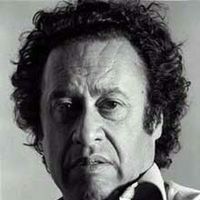
Enrique Lihn Carrasco (Santiago, Chile, 3 de septiembre de 1929 - Santiago, 10 de julio de 1988) fue un poeta, dramaturgo, novelista, crítico y dibujante chileno. Realizó sus estudios básicos en el Saint George's College y posteriormente en el Liceo Alemán de Santiago. En el año 1942 ingresó a la Escuela de Bellas Artes de la Universidad de Chile, para estudiar dibujo y pintura. En 1949 publicó su primer libro de poemas, titulado Nada se escurre. En 1960 nació su única hija, Andrea Lihn Mingram. En 1963 publicó el que consideraba su primer libro valedero, La pieza oscura (solía omitir la mención de sus libros anteriores, Nada se escurre y Poemas de este tiempo y de otro, de 1956). La pieza oscura fue traducida al francés y publicada en París (Pierre Jean Oswald Editeur) en 1972, con ilustraciones de Roberto Matta; una antología de su poesía, traducida al inglés, fue publicada por New Directions en Nueva York bajo el título The Dark Room and other poems en 1978. Junto a Nicanor Parra, Alejandro Jodorowsky, Jorge Sanhueza, Jorge Berti y otros (Humeres, Oyarzún) creó el Quebrantahuesos, collage editado en 1952. Con el escritor Germán Marín, fundó la revista Cormorán, de la Editorial Universitaria, que publicó nueve números entre los años 1969 y 1971. En 1965 obtuvo la beca de museología de la Unesco, lo que le permitió viajar a París. En 1966 recibió el Premio Casa de las Américas por su obra Poesía de paso. Entre 1967 y 1968 vivió en La Habana. En 1969 publicó La musiquilla de las pobres esferas en Chile. Entre los años 1970 y 1973, dirigió el taller de poesía de la Universidad Católica de Chile. En 1972 se integró como profesor investigador de literatura en el Centro de Estudios Humanísticos de la Facultad de Ciencias Físicas y Matemáticas de la Universidad de Chile, cargo que tuvo hasta su muerte en 1988. En 1973 publicó en Argentina su novela Batman en Chile. Apareció las vísperas del Golpe de Estado en Chile de 1973, lo que impidió su distribución en aquel país. En 1975 fue invitado por el gobierno francés para trasladarse a dicho país, y escribió París, situación irregular, publicado en Chile en 1977. En 1978 obtuvo la Beca Guggenheim, por lo que se trasladó a Nueva York A partir de Manhattan (poemas) se publicó en Chile en 1979. Luego viajó varias veces a Estados Unidos como profesor visitante en distintas universidades. Escribió y montó obras de teatro, y realizó performances y videos. Su presentación de El Paseo Ahumada en ese mismo lugar le valió un breve arresto policial en 1983. Esta obra, junto a La Aparición de la Virgen fueron ediciones precarias, autofinanciadas en gran medida por el poeta y sus amigos, en un intento de oponerse a la asfixiante cultura oficial de la época de la dictadura militar en Chile. Enrique Lihn Carrasco falleció en Santiago de Chile el 10 de julio de 1988, víctima de cáncer. Hasta el último momento de su vida estuvo escribiendo. Su libro Diario de muerte (1989) fue publicado, por encargo suyo, por sus amigos Pedro Lastra y Adriana Valdés, quienes reunieron, transcribieron y ordenaron los poemas que dejó al morir. El título fue puesto por él mismo en el cuaderno donde los reunió. Antologías y publicaciones póstumas Después de su muerte se han publicado varias antologías suyas: Álbum de toda especie de poemas (Editorial Lumen) en España; Porque escribí (FCE) en México y Chile; y (Figures of Speech) en Estados Unidos. También se publicaron las entrevistas a su persona, aparecidas tanto en la prensa chilena como extranjera, por el investigador Daniel Fuenzalida Enrique Lihn: Entrevistas (Juan Carlos Saéz editor, Santiago 2006). Ana María Risco y Adriana Valdés editaron también sus textos de arte: Escritos sobre arte. Santiago: Ediciones de la Universidad Diego Portales, 2008. Obras * Nada se escurre, 1950. * Introducción a la poesía de Nicanor Parra, 1952. * Poemas de este tiempo y de otro, 1955. * Pedro Luna, 1959. * La pieza oscura, 1963. * Agua de arroz, 1964. * Poesía de paso, 1966. * Escrito en Cuba, 1969. * La musiquilla de las pobres esferas, 1969. * La cultura en la vía chilena al socialismo, 1971. * Algunos poemas, 1972. * Diez cuentos de bandidos, 1972. * Batman en Chile, 1973. * Por fuerza mayor, 1975. * La orquesta de cristal, 1976. * París, situación irregular, 1977. * Lihn y Pompier, 1978. * El arte de la palabra, 1980. * A partir de Manhattan, 1979. * Antología al azar, 1981. * Estación de los desamparados, 1982. * Poetas, voladores de luces, 1982. * Al bello aparecer de este lucero, 1983. * El Paseo Ahumada, 1983. * Sobre el estructuralismo de Ignacio Valente, 1983. * Pena de extrañamiento, 1986. * Mester de juglaría, 1987. * Señales de ruta de Juan Luis Martínez, 1987. * La aparición de la virgen, 1987 * Eugenio Téllez, 1988 * Álbum de toda especie de poemas, 1989 * Asedios a Oscar Hahn, 1989 * Diario de muerte, 1989 * La república independiente de Miranda, 1989. * Un comic, 1992. * Porque escribí, 1995. * El circo en llamas, 1997. * Huacho y pochocha, 2005. * Una nota estridente, 2005 * Enrique Lihn: Entrevistas, 2006. * Textos sobre arte, 2008. Referencias http://es.wikipedia.org/wiki/Enrique_Lihn

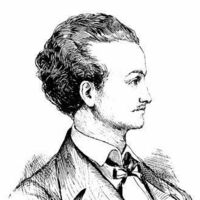
Gabriel de la Concepción Valdés, o “Plácido” (seudónimo con el cual firmó su obra), tal vez haya sido el poeta de mayor aceptación popular entre los escritores cubanos del siglo XIX. Versificador espontáneo como pocos antes o después, algunos críticos lo consideran entre los iniciadores del criollismo y también del siboneyismo en la lírica cubana. Normalmente se le incluye entre los románticos cubanos, donde sinceramente corresponde de acuerdo al período, pero gran parte de la obra de Plácido es mucho más alegre, sin dejar de ser fina, y carente del exceso romántico. Como dijo Lezama Lima -“Fue la alegría de la casa, de la fiesta, de la guitarra y de la noche melancólica. Tenía la llave que abría la puerta de lo fiestero y aéreo.” Indudablemente, capturó al verdadero espíritu cubano en sus versos. Plácido escribió muchos poemas de carácter popular y para las fiestas familiares también fueron muchas las improvisaciones que redactó. Algunos críticos han caracterizado estas obras como vulgares, cuando en realidad exponían la vida cotidiana de aquellos años en Cuba como sólo los criollos lograron hacerlo. Otros aun reclaman que no debe ser incluido en la literatura afrocubana ya que su obra es muy refinada, semejándose demasiado a la de los blancos. Irónico que su obra también haya sido juzgada con el mismo perjuicio que fue su piel. Eso es lo que quería decir ser mulato en la isla durante los años de Gabriel de la Concepción Valdés: no ser aceptado ni por los de la raza blanca, ni por los de la casta negra. Es cierto que las poesías de Plácido no tienen la perfección ni la profundidad ideológica de Heredia o Milanés. Mas sin embargo, la versificación es tan natural que algunos de sus poemas eran escuchados cien años más tarde en las calles de La Habana, repetidos de memoria en muchos casos sin saber el declamador quien era el autor. En el siglo XIX Plácido fue el poeta de mayor aceptación y divulgación en Cuba, y en la literatura cubana uno de los de mayor sensibilidad. Fueron muchas las poesías de Plácido que recibieron halagos por sus contemporáneos y otros poetas posteriores. Entre otras unas de las más reconocidas son Jicotencal, A Una Ingrata, La Flor del Café, La Flor de Caña, La Flor de la Piña. Se comenta que durante sus últimos días, en la cárcel, compuso Plegaria a Dios y que cuando era dirigido del calabozo al lugar de su fusilamiento iba declamando esta poesía. Si desea consultar una selección algo más amplia, por favor visite Algunas Poesías de Gabriel de la Concepción Valdés donde iremos añadiendo más obras de este poeta cubano. ¿Quién fue Gabriel de la Concepción Valdés? El 18 de marzo nace Diego Gabriel de la Concepción Valdés en la ciudad de La Habana. Su madre, Concepción Vázquez, era bailarina española natural de Burgos. Su padre, Diego Ferrer Matoso, era peluquero de nacionalidad cubana y raza negra. De unos días de nacido, la madre dejó a Plácido en la Casa Cuna o Real Casa de Beneficencia y Maternidad de la Habana. El apellido “Valdés” se le fue dado, al igual que a todos los otros niños allí bautizados, en honor al Obispo Valdés, fundador de la Casa Cuna. El nombre Gabriel de la Concepción, Concepción de la madre, se dice que estaba escrito en una nota que acompañaba al niño al ser dejado en la Casa Cuna. Algunas referencias indican que tal nota se limitaba a “Nació el 18 de Marzo de 1809” otras la exponen a también incluir “... y se llama Gabriel de la Concepción”. El nombre del padre, Diego, se dice que estaba en la partida de bautismo; donde aparece el nombre del capitán de Milicias D. Joaquín de Cárdenas como padrino, que aparentemente en realidad lo fue Plácido Fuentes. Su padre lo adoptó y mantuvo hasta que tenía unos diez años, más tarde lo dio a criar a la abuela paterna del niño. Existen diferentes percepciones con respecto al acto de la madre hacia el bebito. Hay quienes estiman que le abandonó debido a los rigores de su trabajo. Otros piensan, lo cual tiene considerable peso, que no lo abandonó, sólo lo dejó en la Casa de Beneficencia para que el padre lo pudiera adoptar legalmente y criar en un ambiente mucho más familiar de lo que ella podía proveer. Creció en la pobreza, con todos los perjuicios de ser mulato en una colonia donde existía la esclavitud. Acudió a algunos colegios durante su niñez, aunque no fue una educación continua o estable. Después de su padre partir hacia México, de donde no regresó, ingresó como estudiante en el taller de Vicente Escobar aprendiendo allí dibujo y caligrafía. Dos años más tarde, en 1823, comenzó a trabajar como aprendiz de tipógrafo en la imprenta de José Severino Boloñá. Ya sus dotes de poetas se habían dado a ver, mas fue en la imprenta, donde expuesto a la poesía, surge la inspiración que le acompañaría hasta su muerte. Pero había que comer y tuvo que dejar la imprenta para dedicarse a labrar peinetas de carey, trabajo más lucrativo en aquellos tiempos. Fue serio en sus relaciones amorosas. Por desgracia de la vida no llegó a casarse con Rafaela, apodada “Fe”, al morir ella durante el noviazgo. Pocos años después, en 1836, contrajo matrimonio con Celia, no durando mucho estos vínculos. En 1842 volvió a casarse, con María Gil Ramona Morales. Su niñez transcurrió en la Habana. Se traslado a la ciudad de Matanzas en 1826 donde trabajó haciendo peinetas de carey. El resto de su vida lo desarrolló en temporadas entre estas dos ciudades. Al menos en una ocasión trató de establecerse en la provincia de Las Villas, pero tuvo que regresar a Matanzas. En una de sus temporadas en Matanzas, fue visitado por Heredia. Hecho de por sí que descalifica toda la publicidad negativa de algunos críticos. Se rumora que Heredia lo invitó a irse con él a México. Lo cierto es que el gran poeta fue a ver a Plácido específicamente y lo trató como poeta y cubano igual a él. Ya desde el comienzo de la década de 1840 las cosas estaban calientes en Cuba y Gabriel de la Concepción Valdés sufrió cierta persecución, llegando a estar preso al menos en una circunstancia. Eventualmente el 28 de Junio de 1844 fue fusilado en Matanzas habiendo sido acusado de ser uno de los integrantes en la Conspiración de la Escalera. Referencias Damisela - www.damisela.com/literatura/pais/cuba/autores/placido/index.htm


